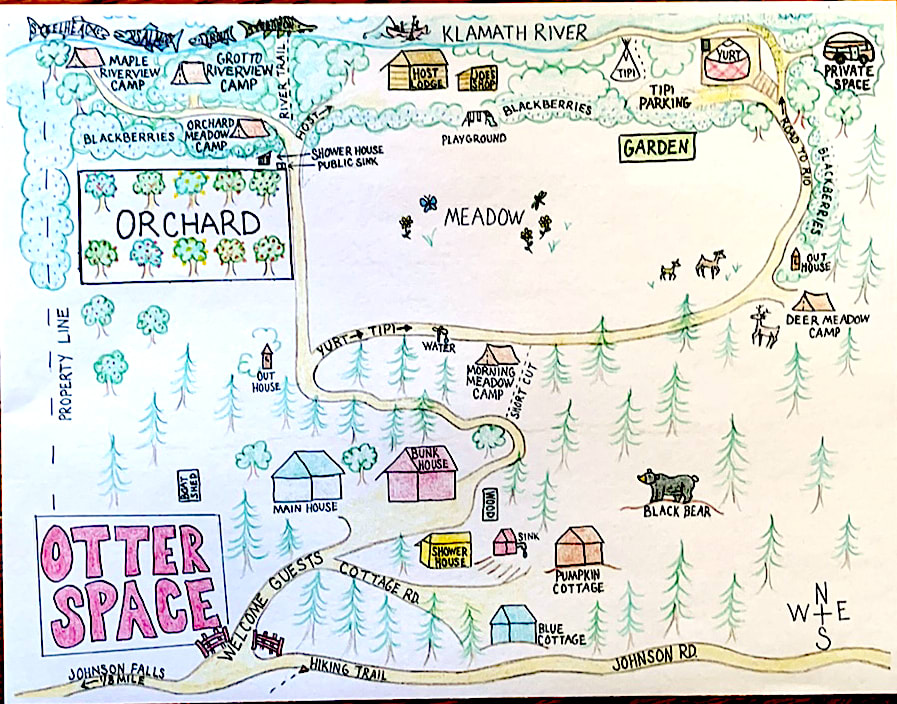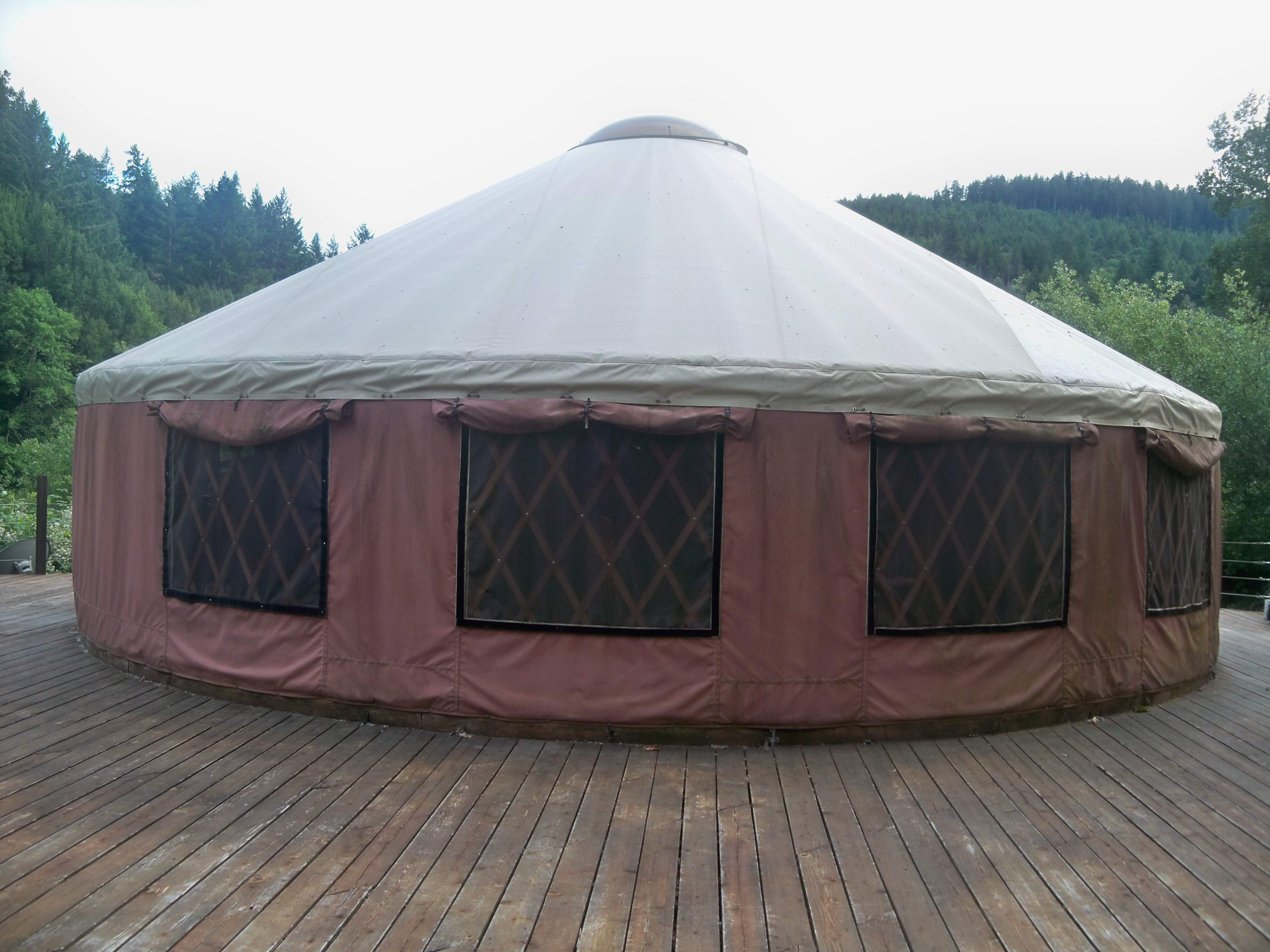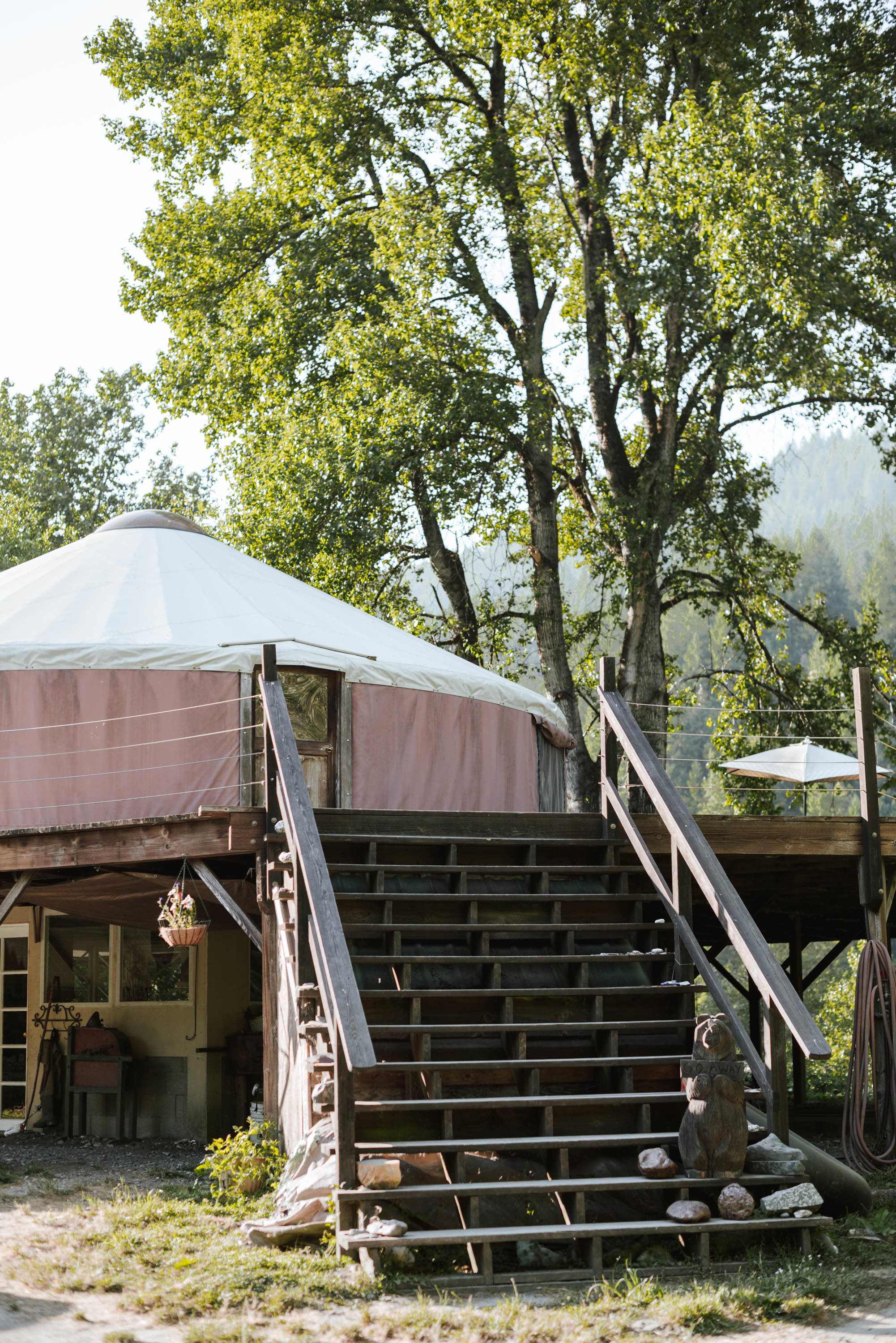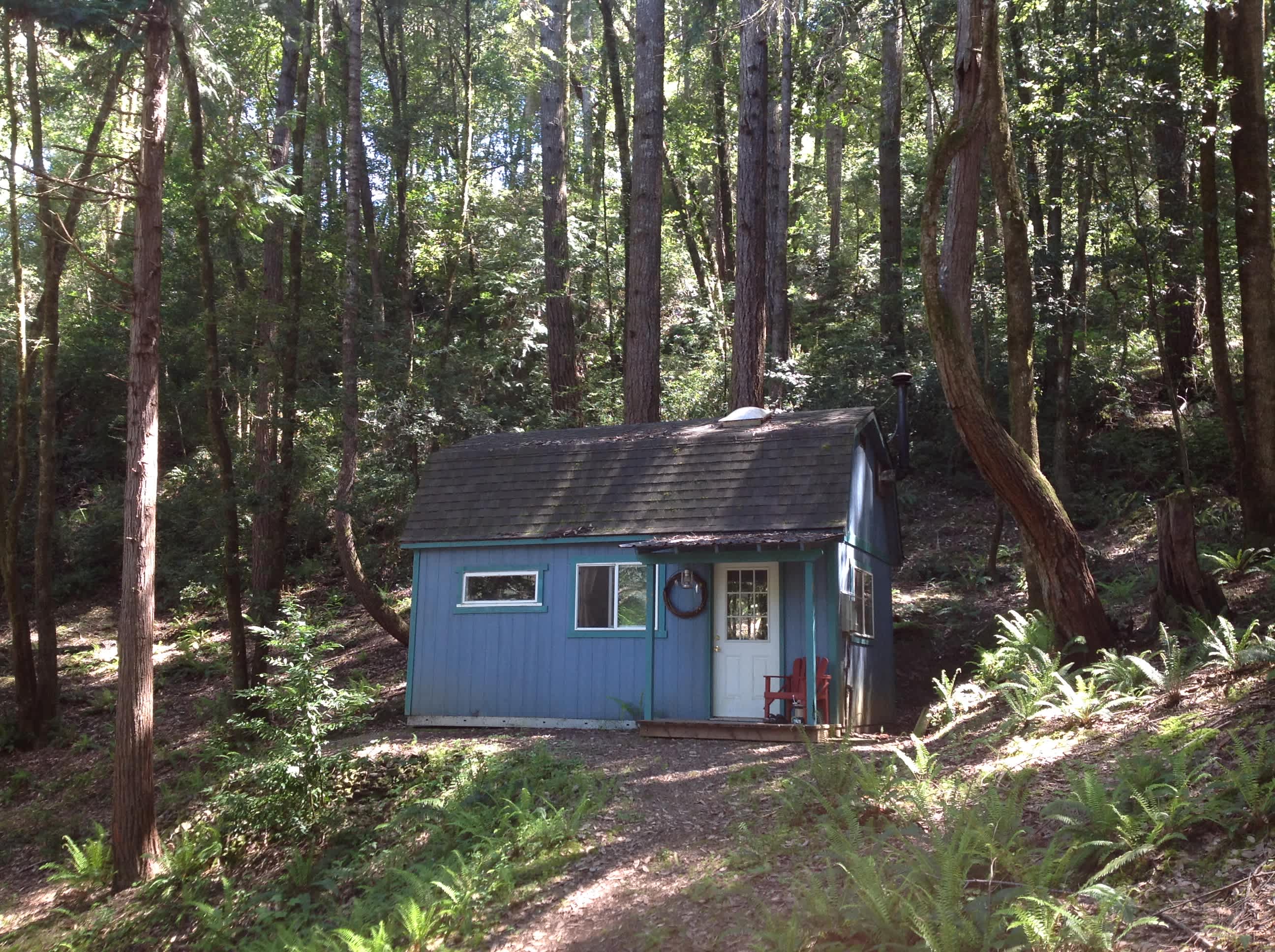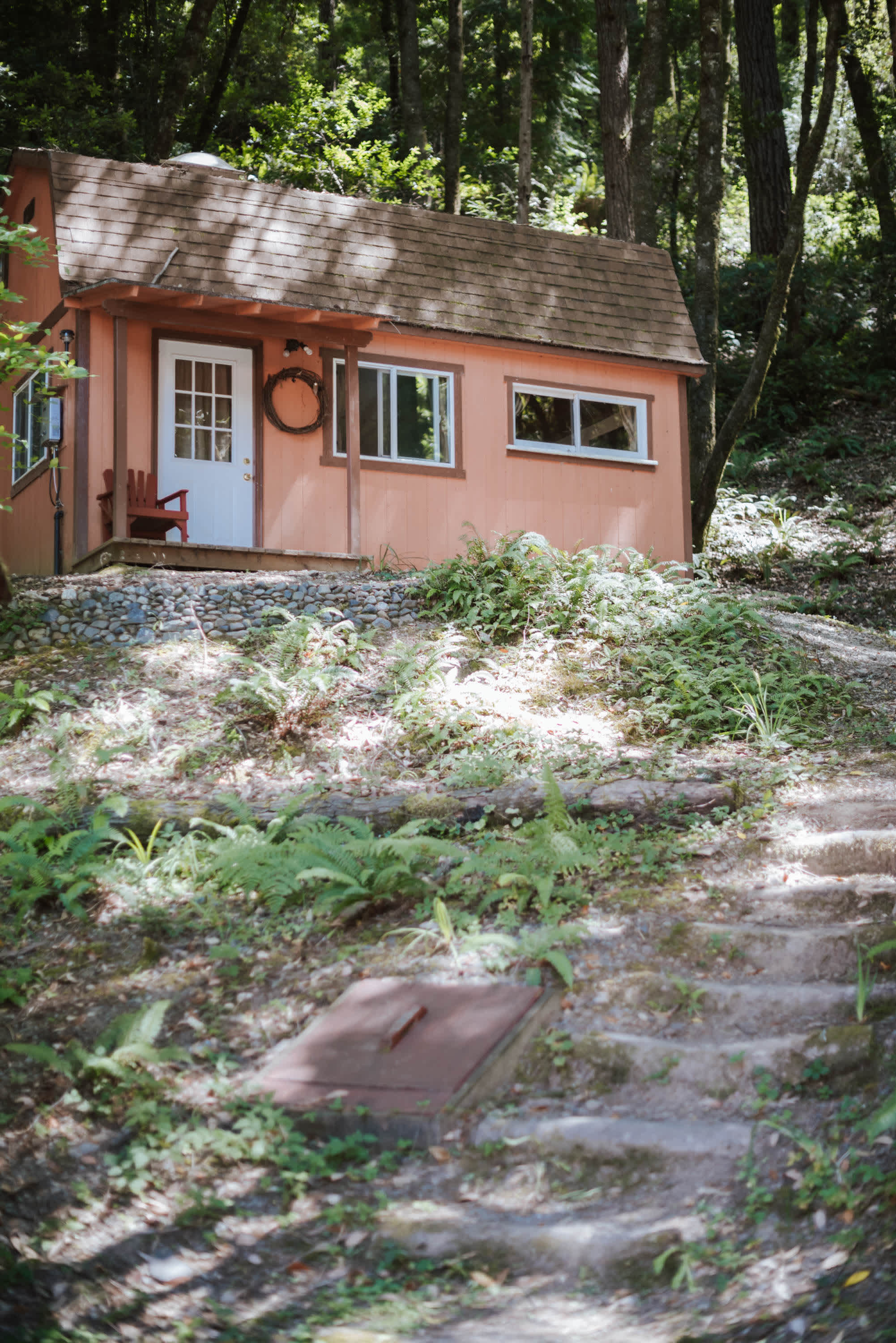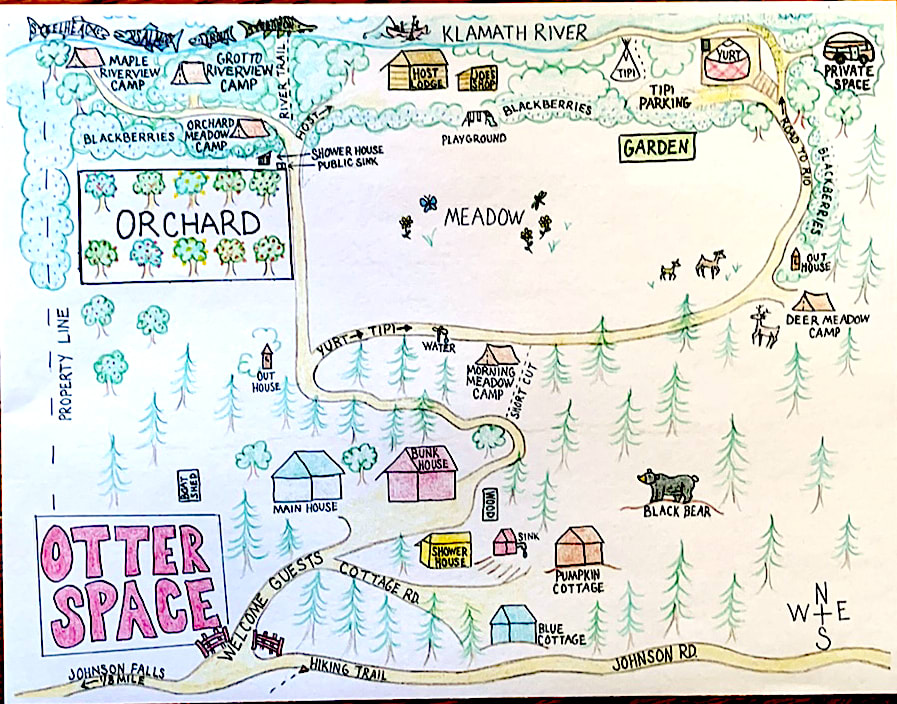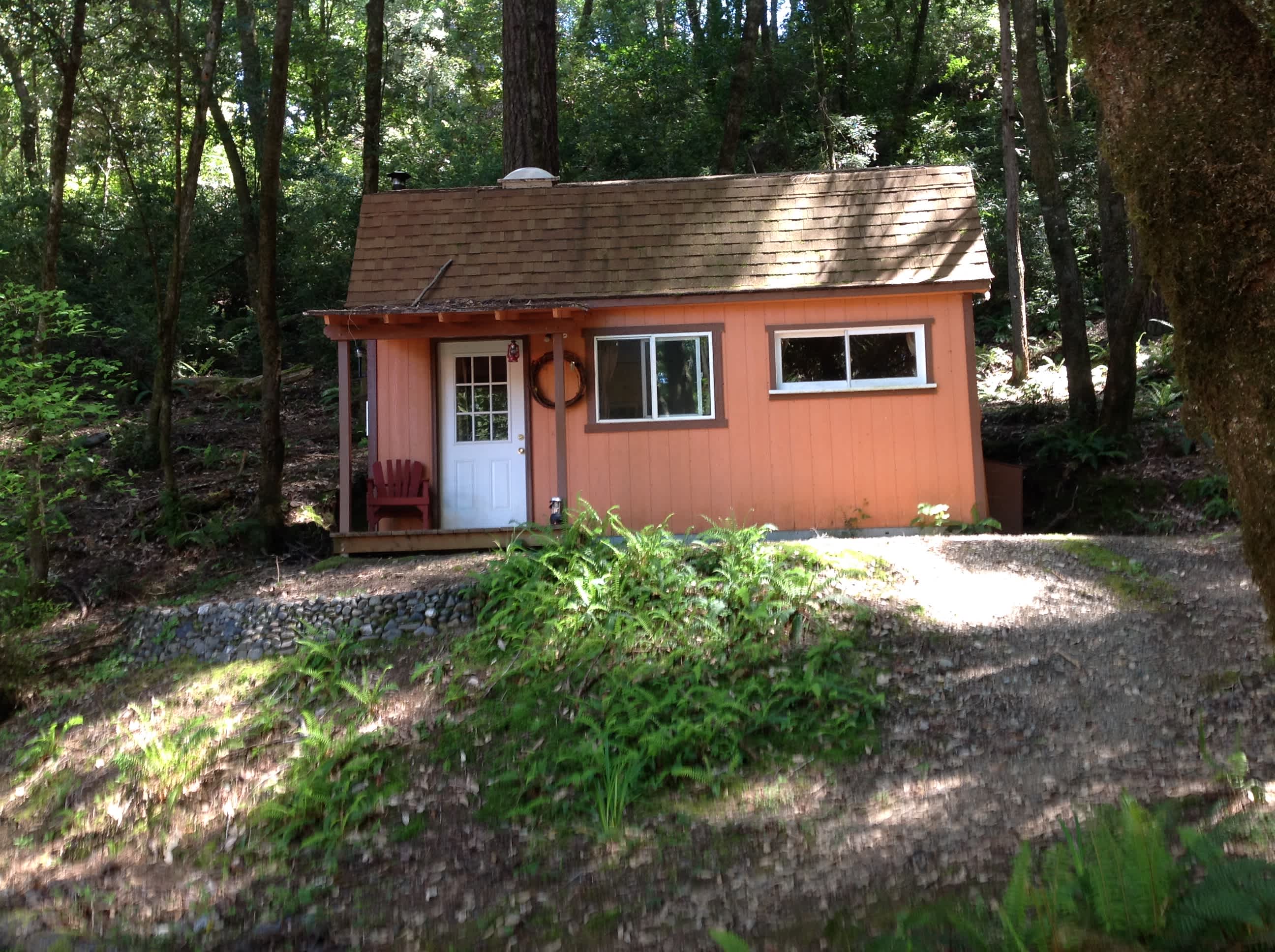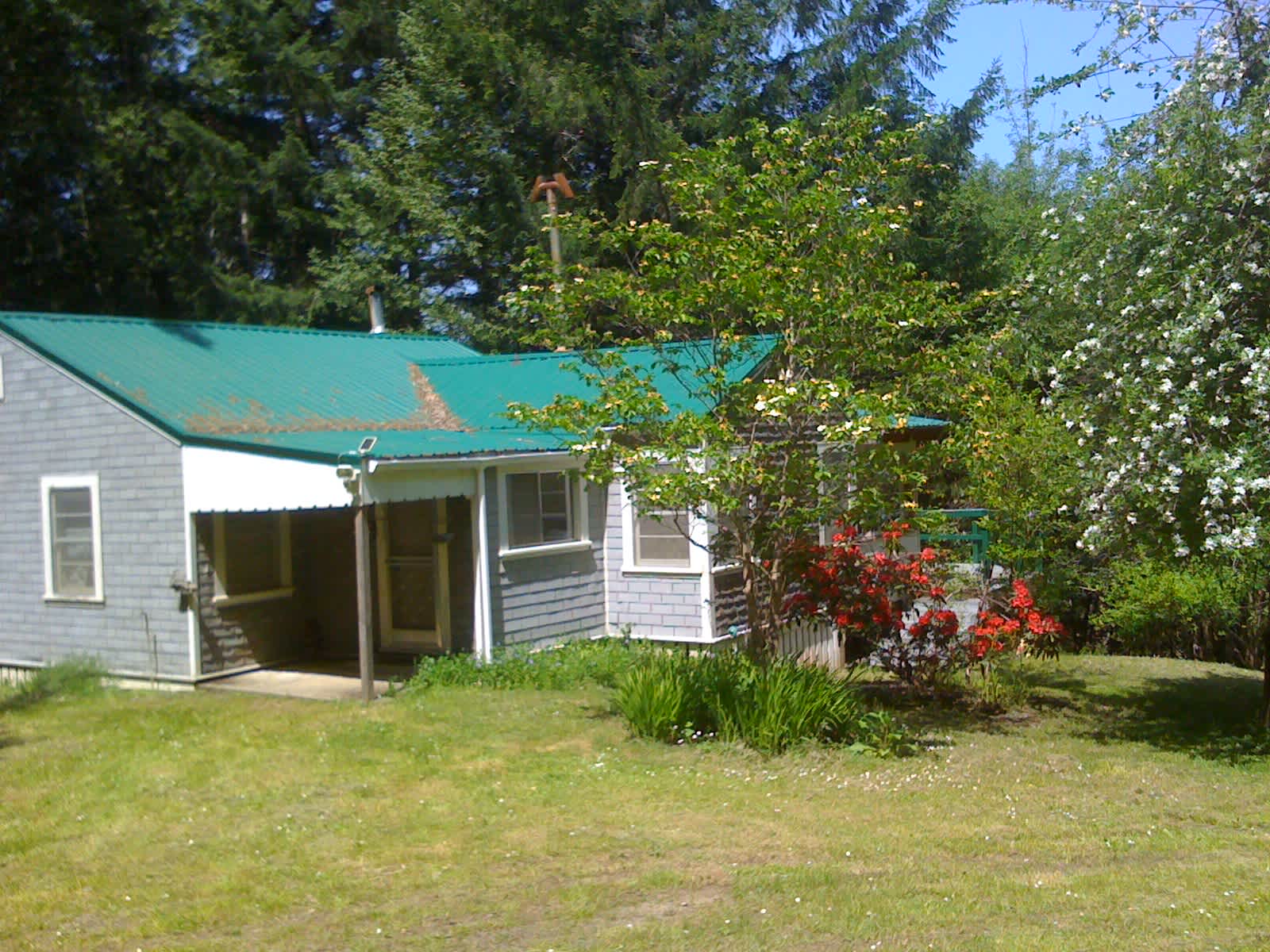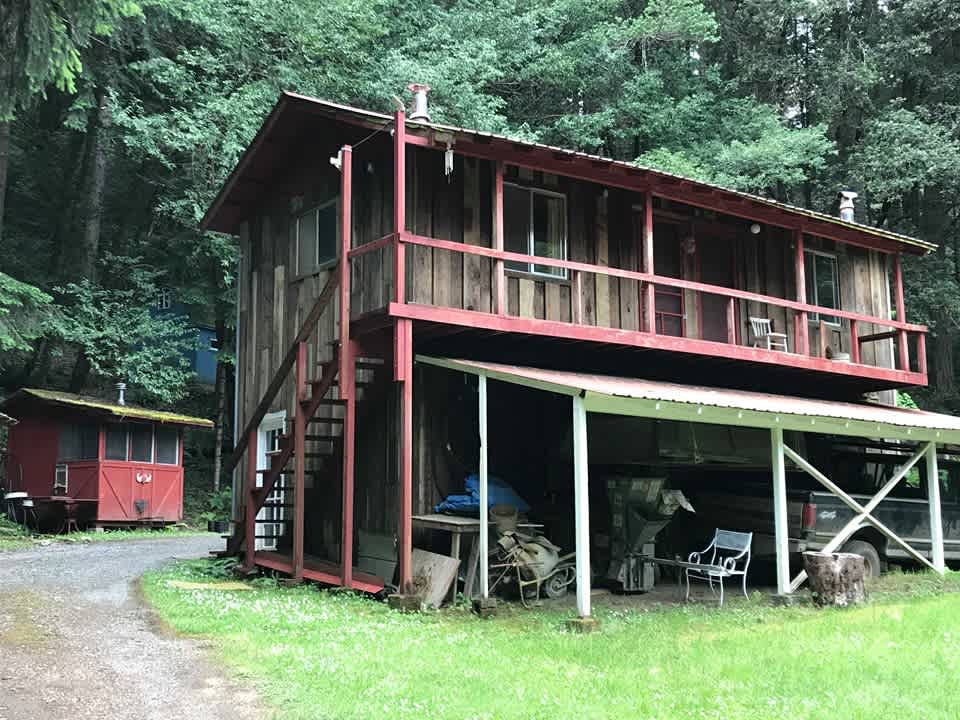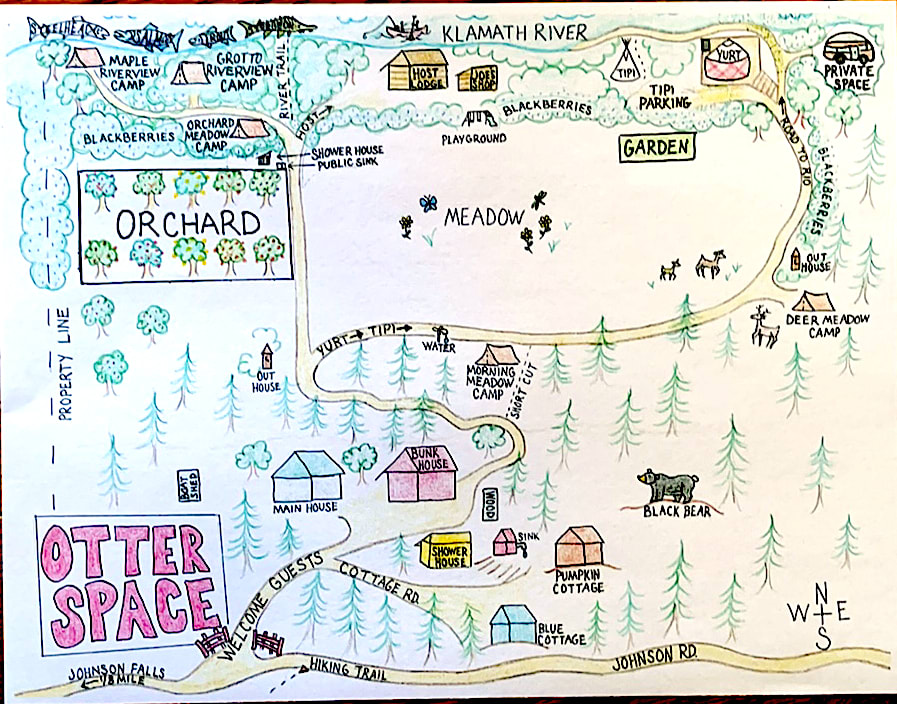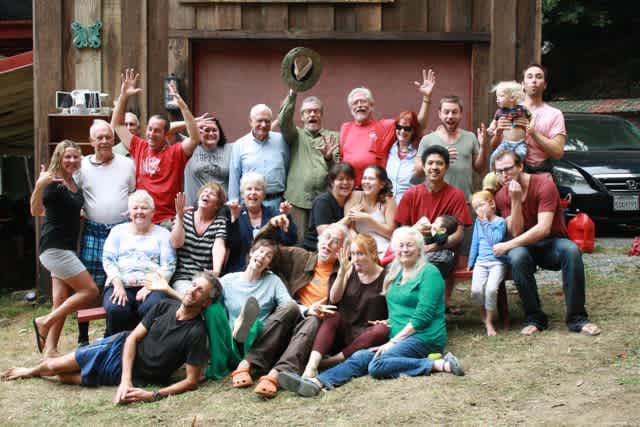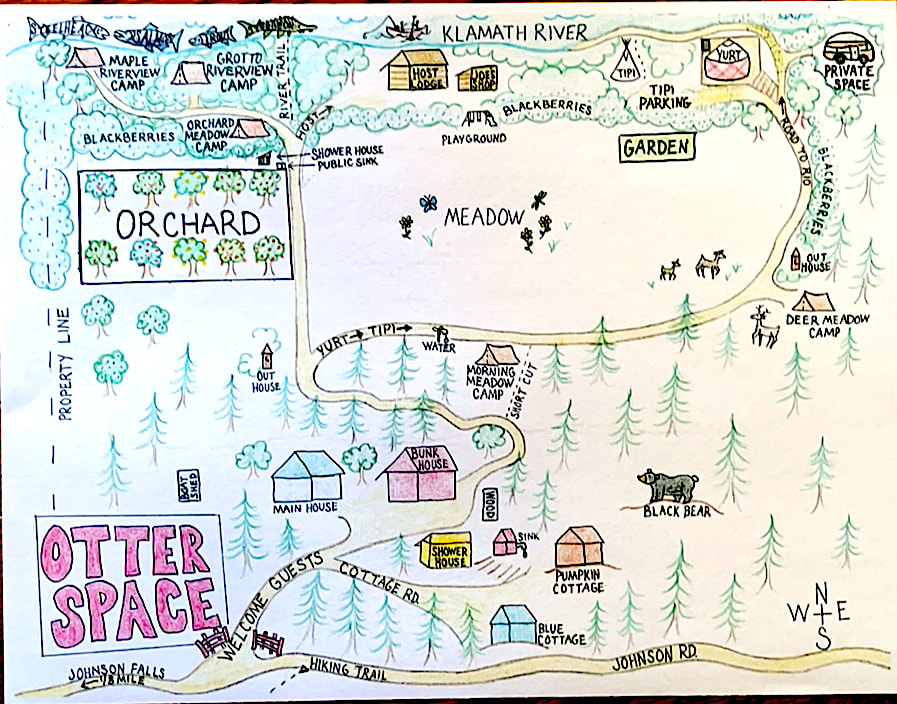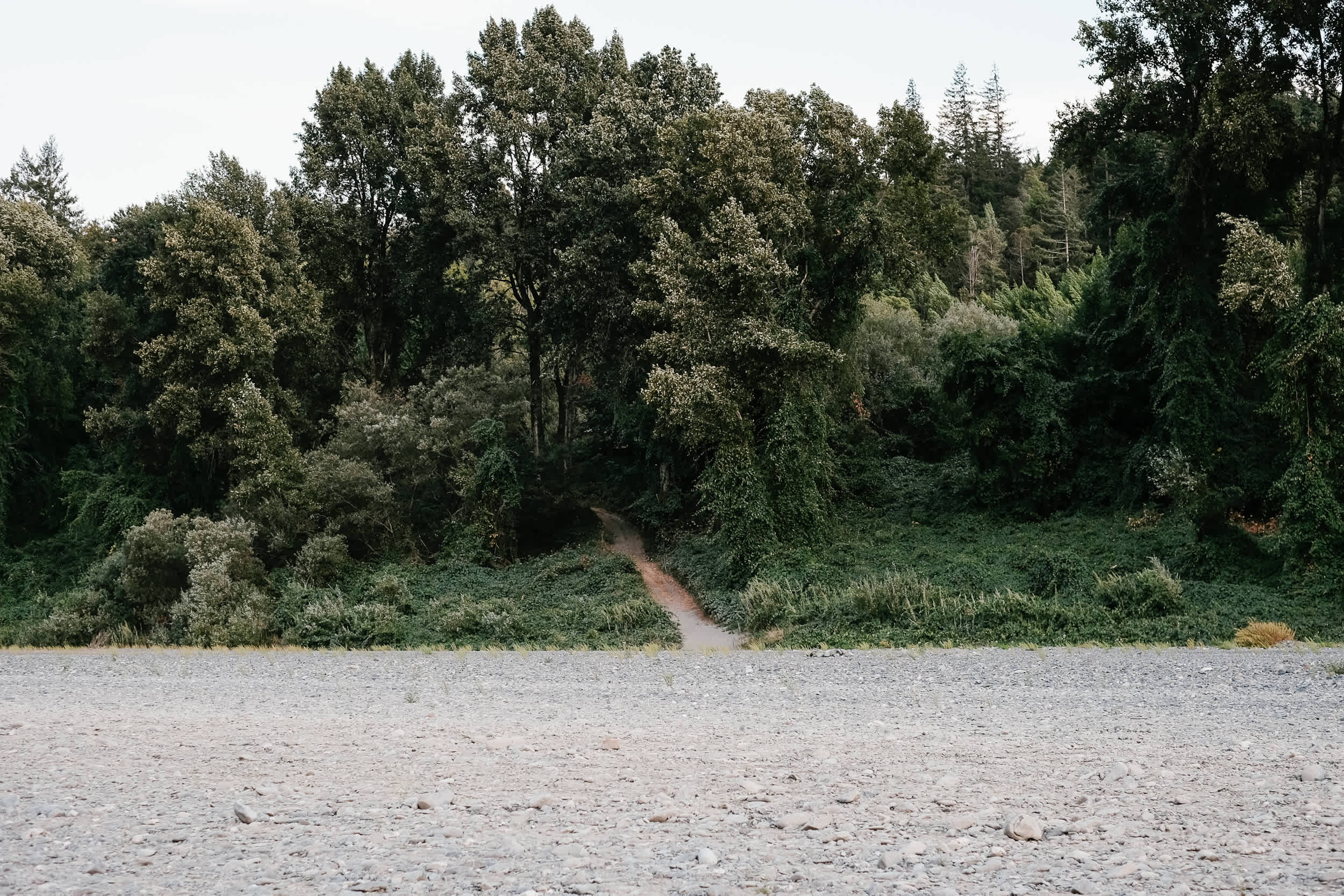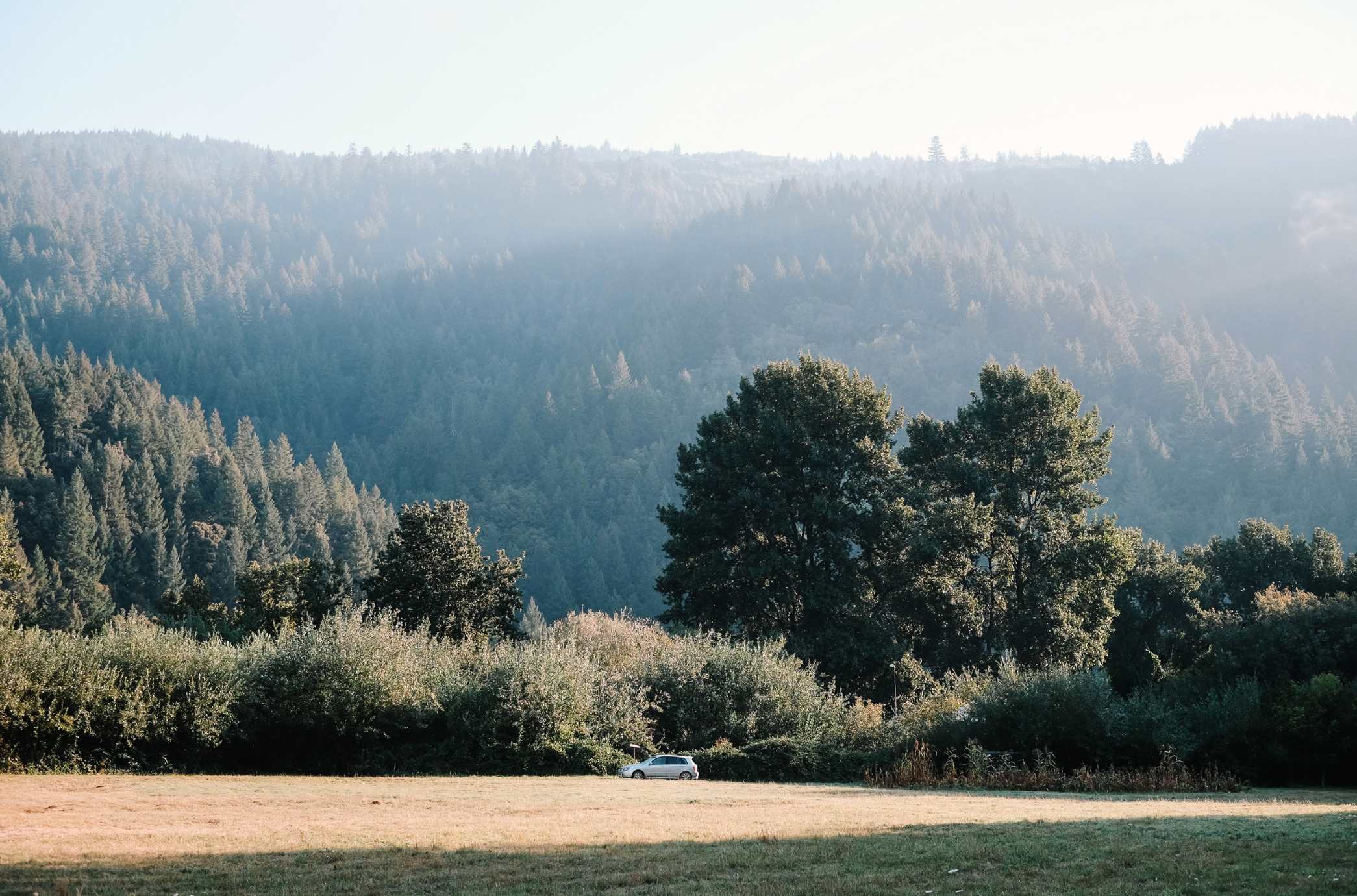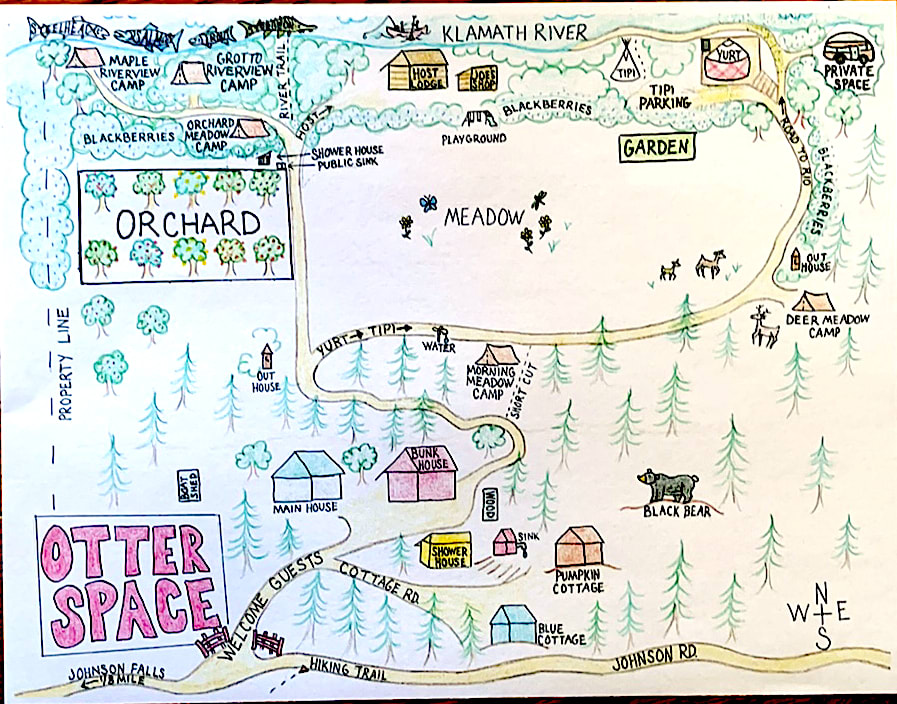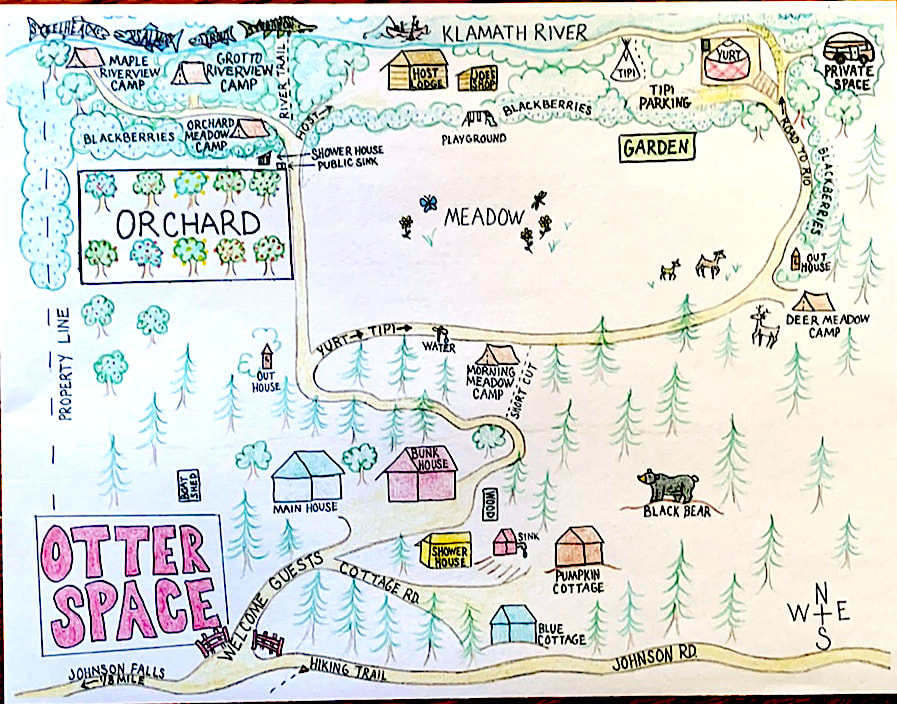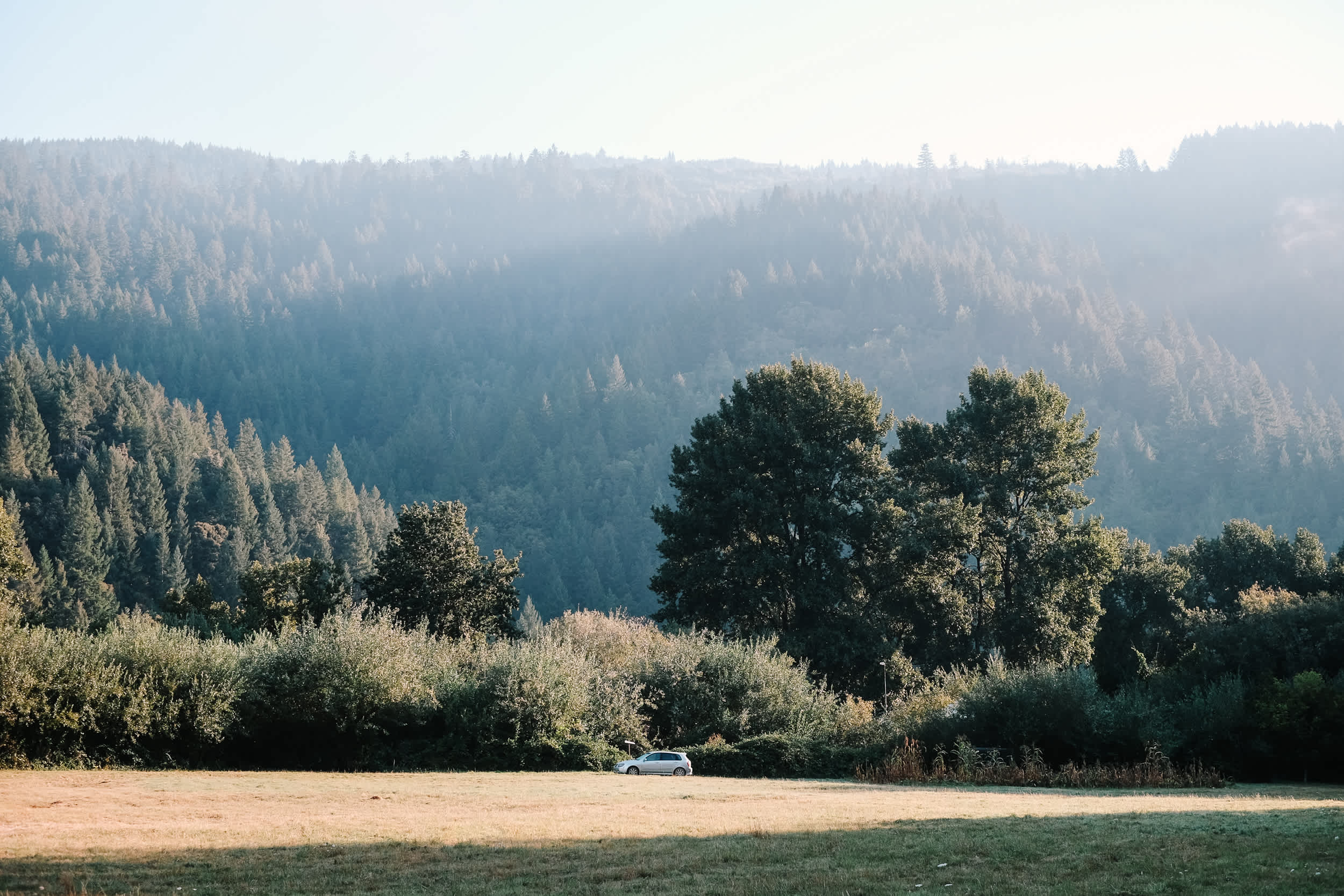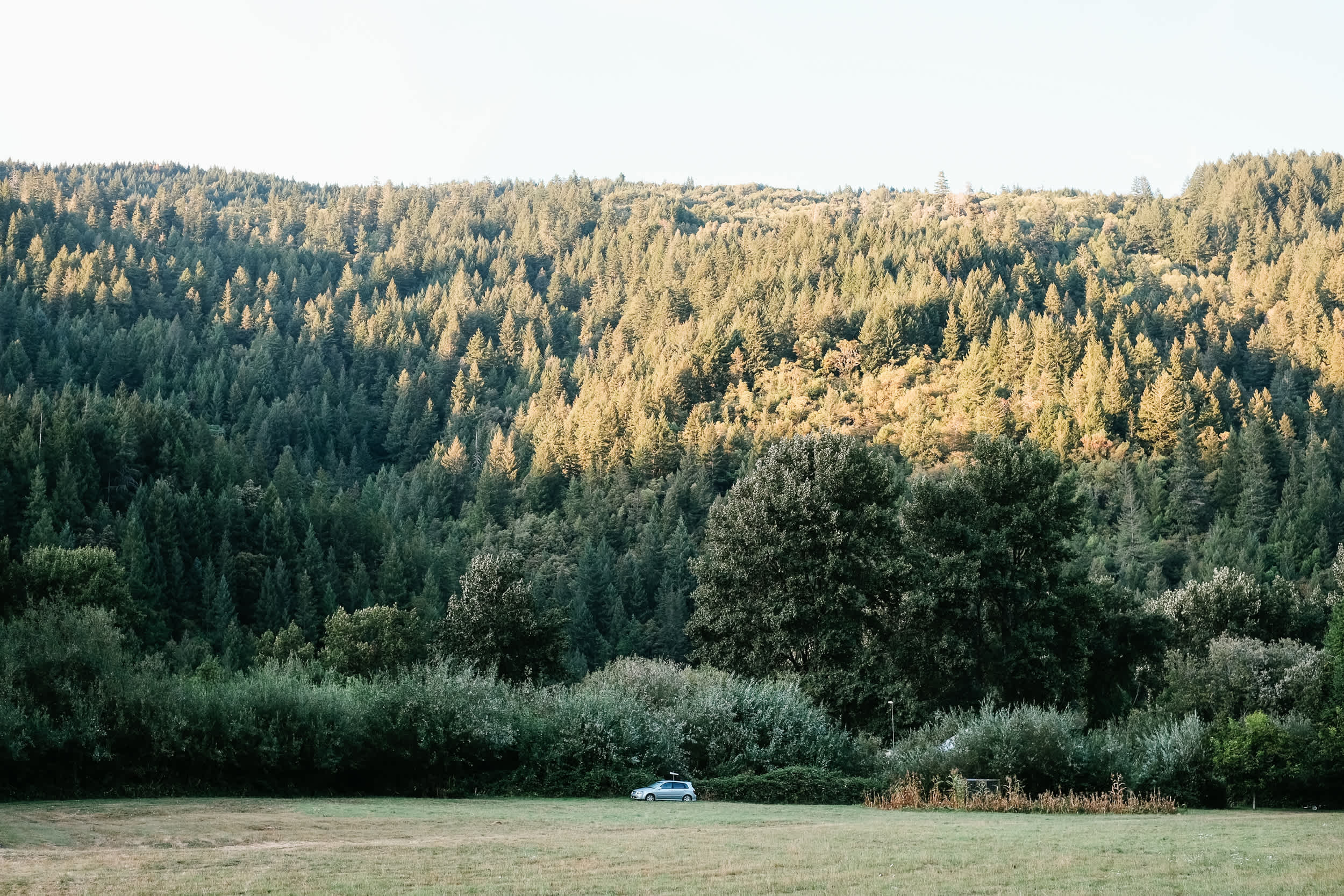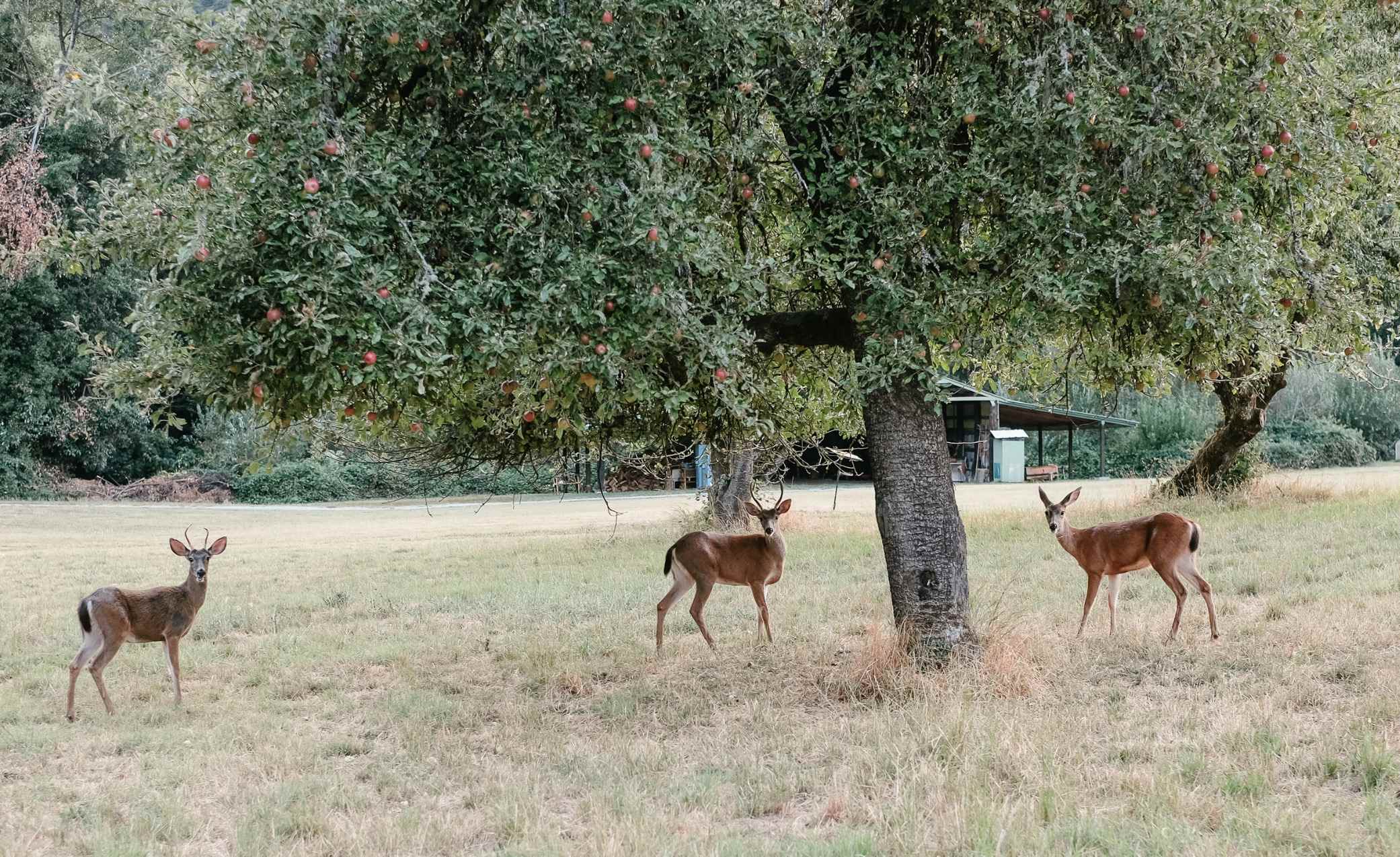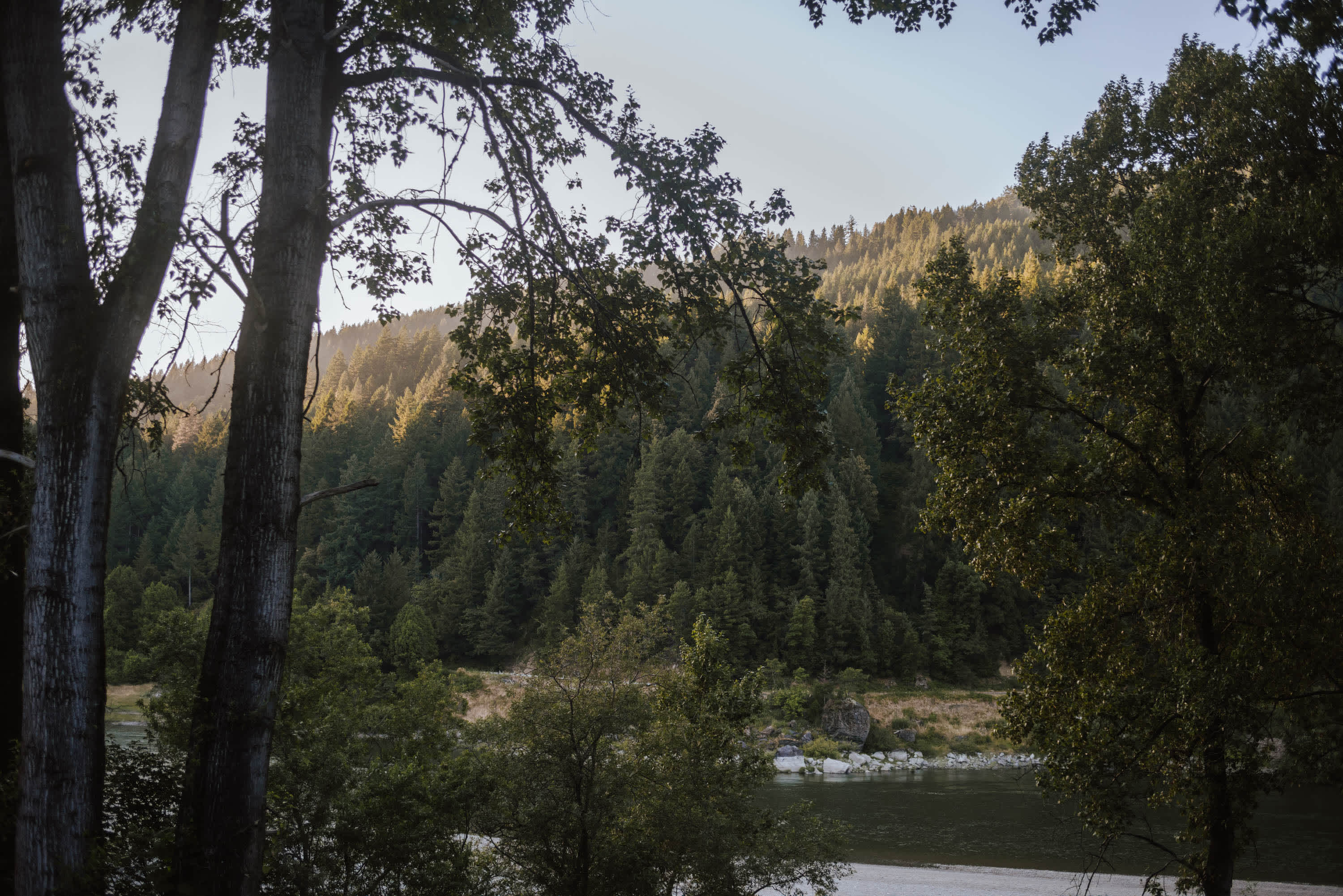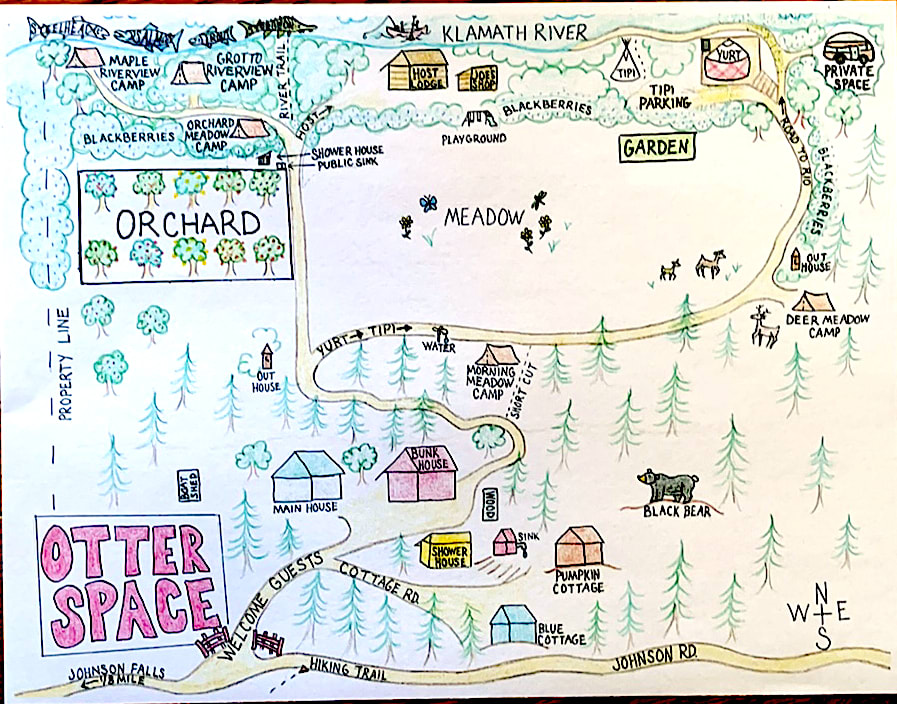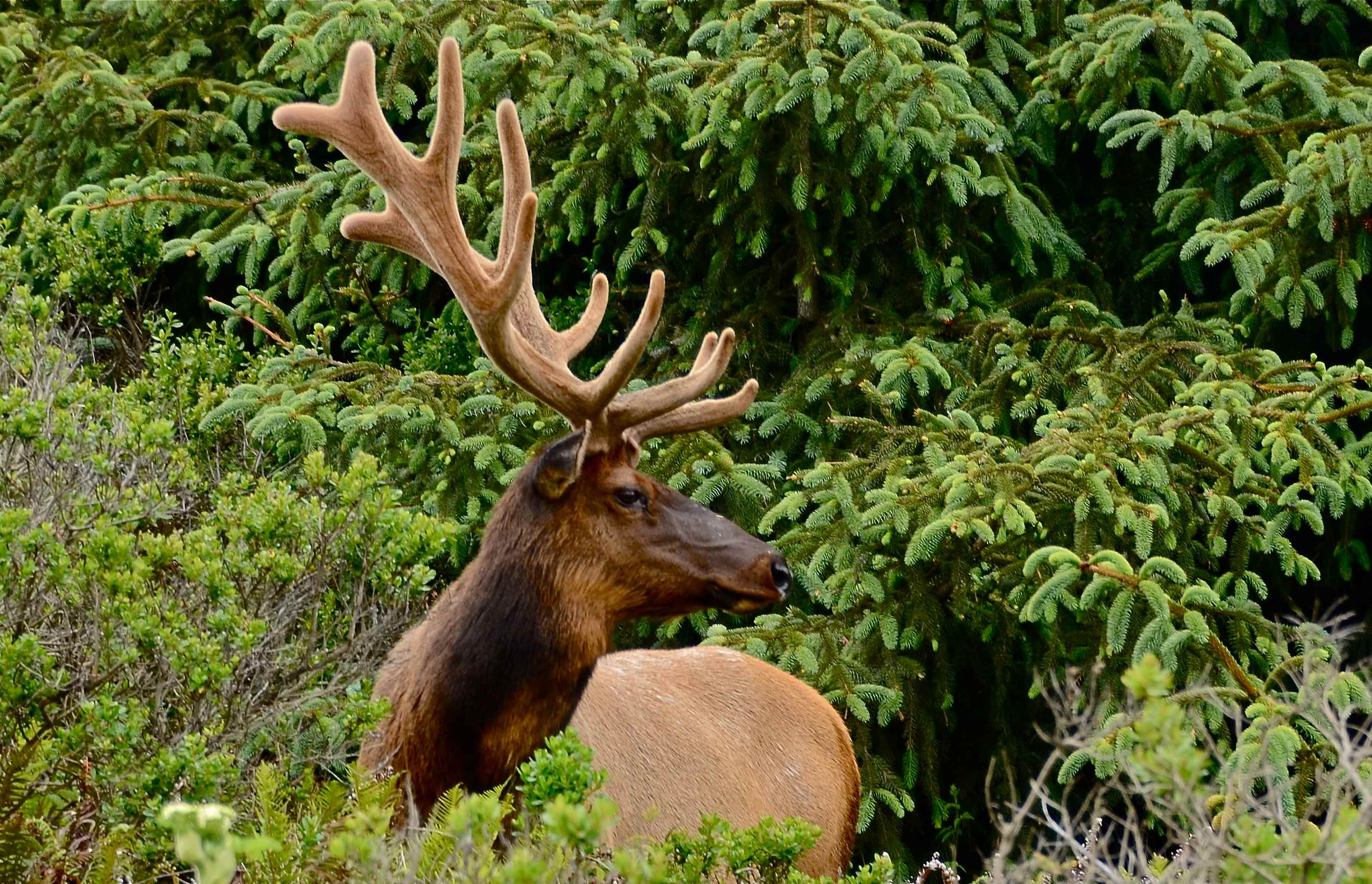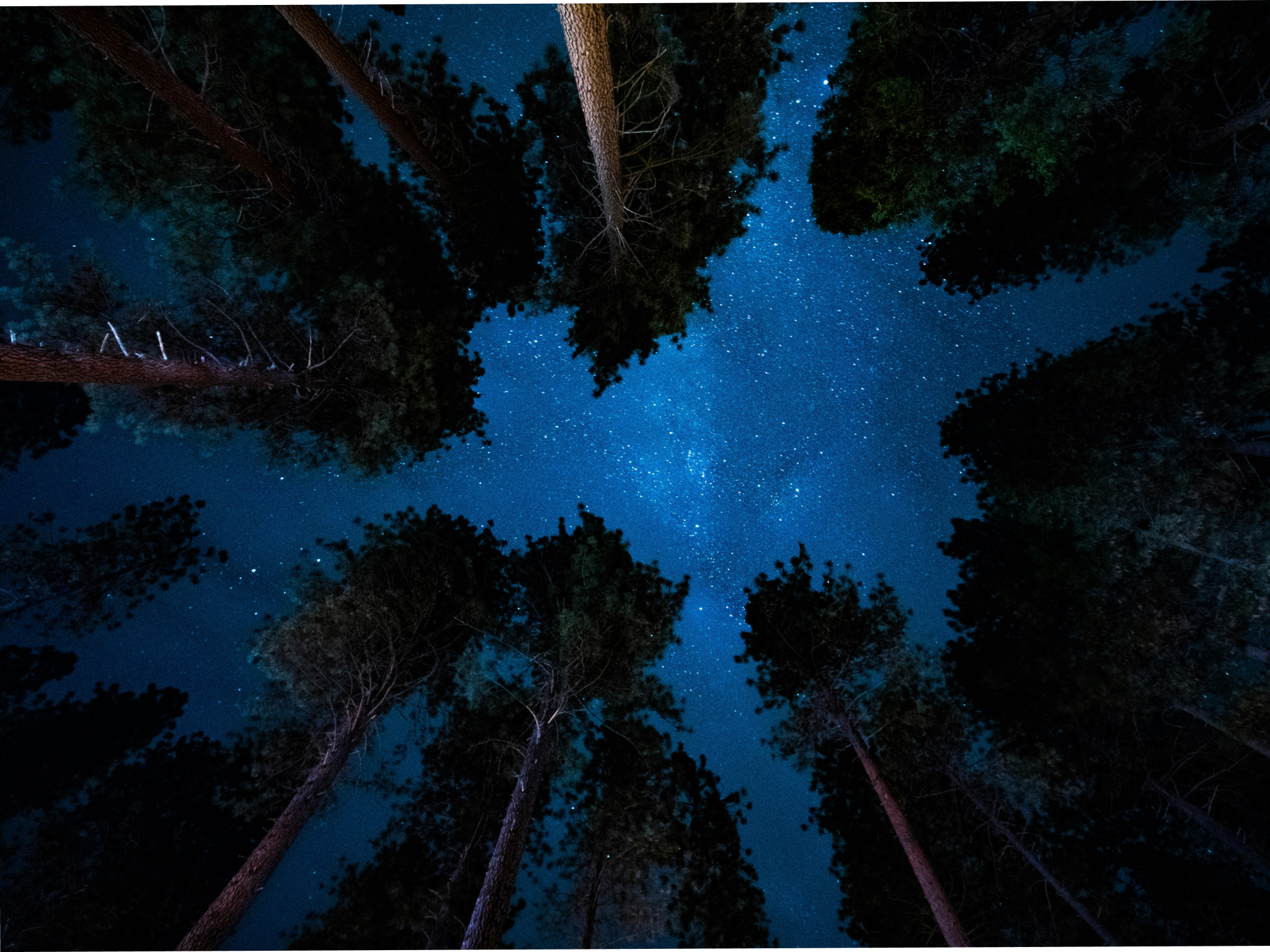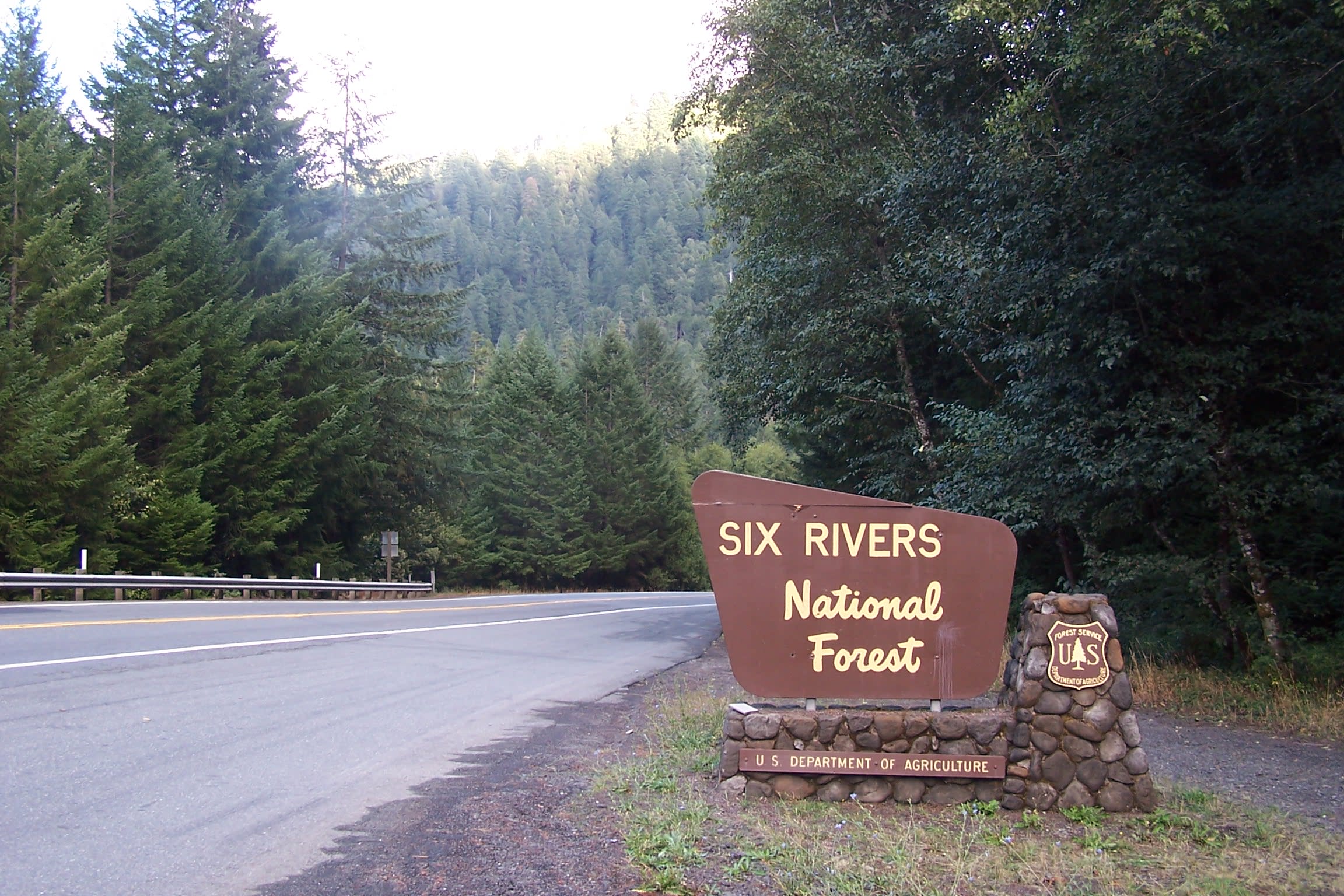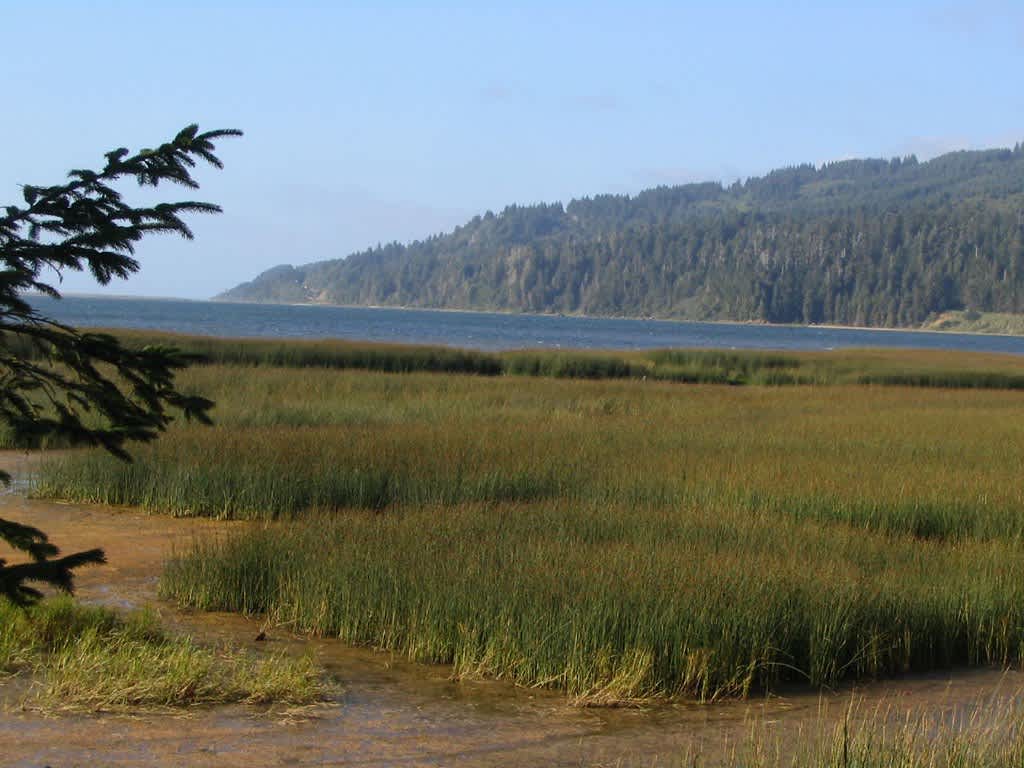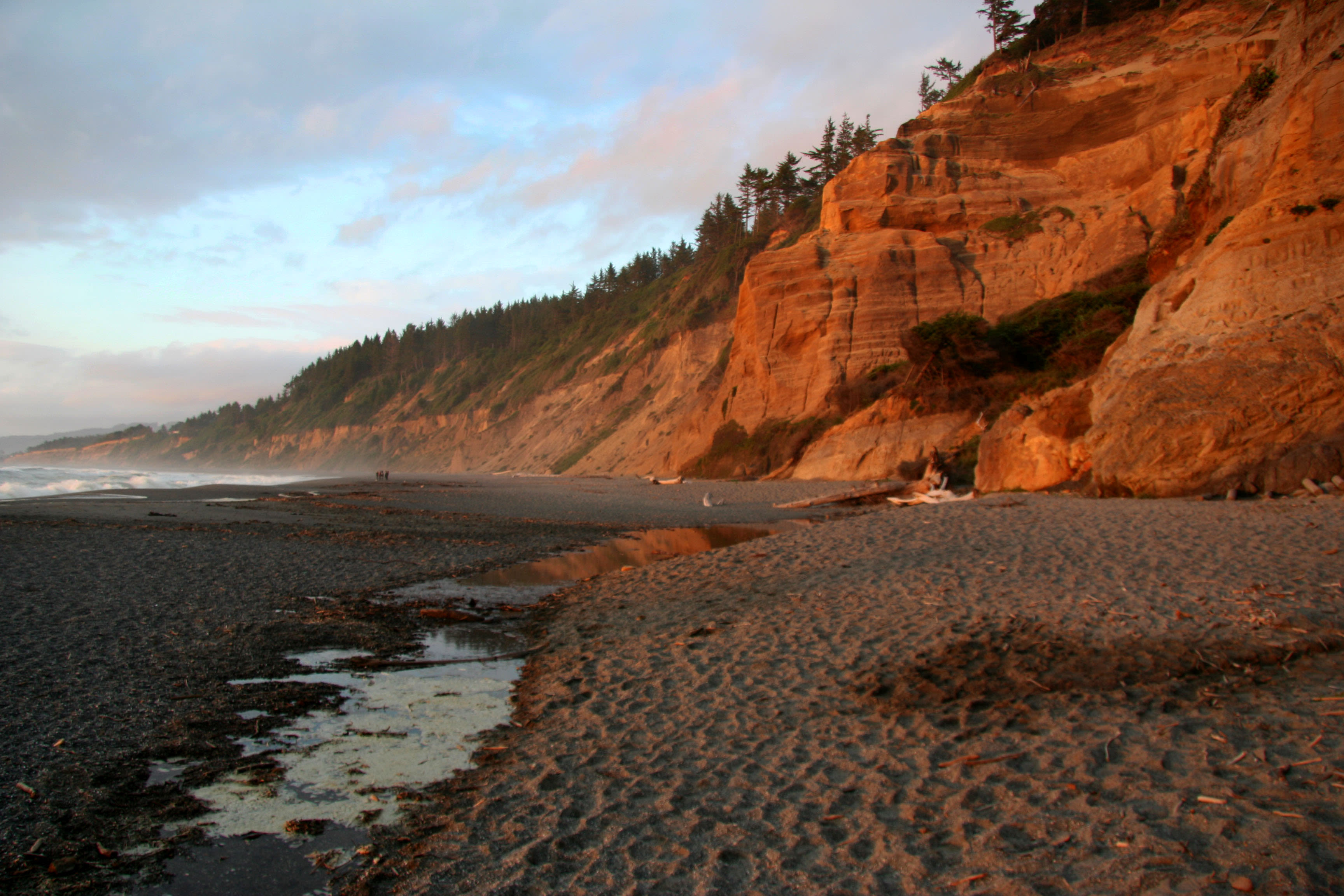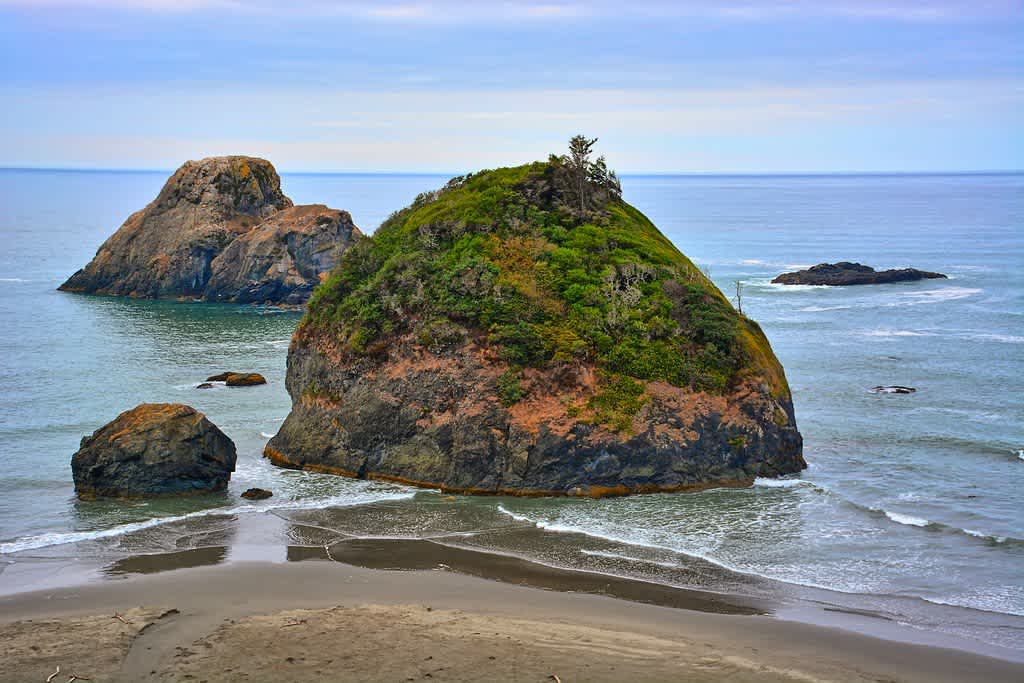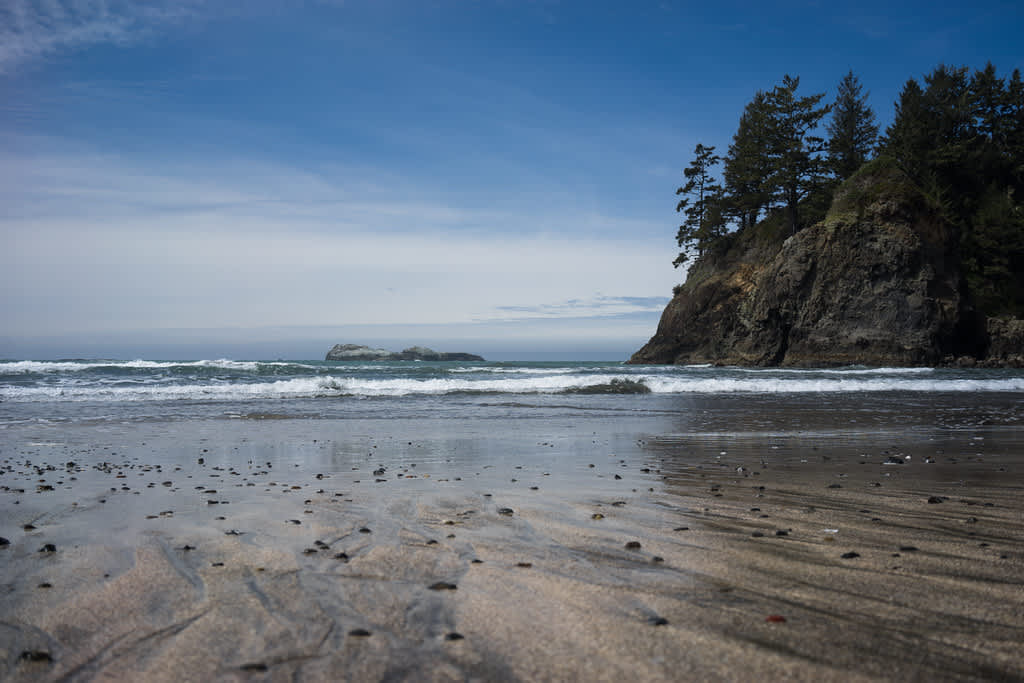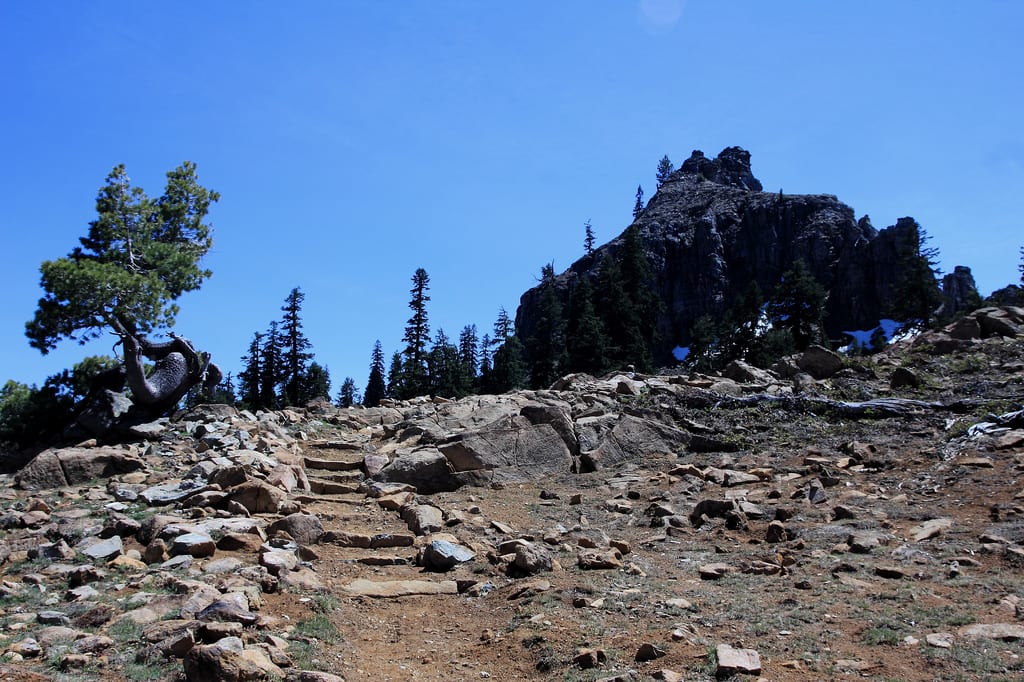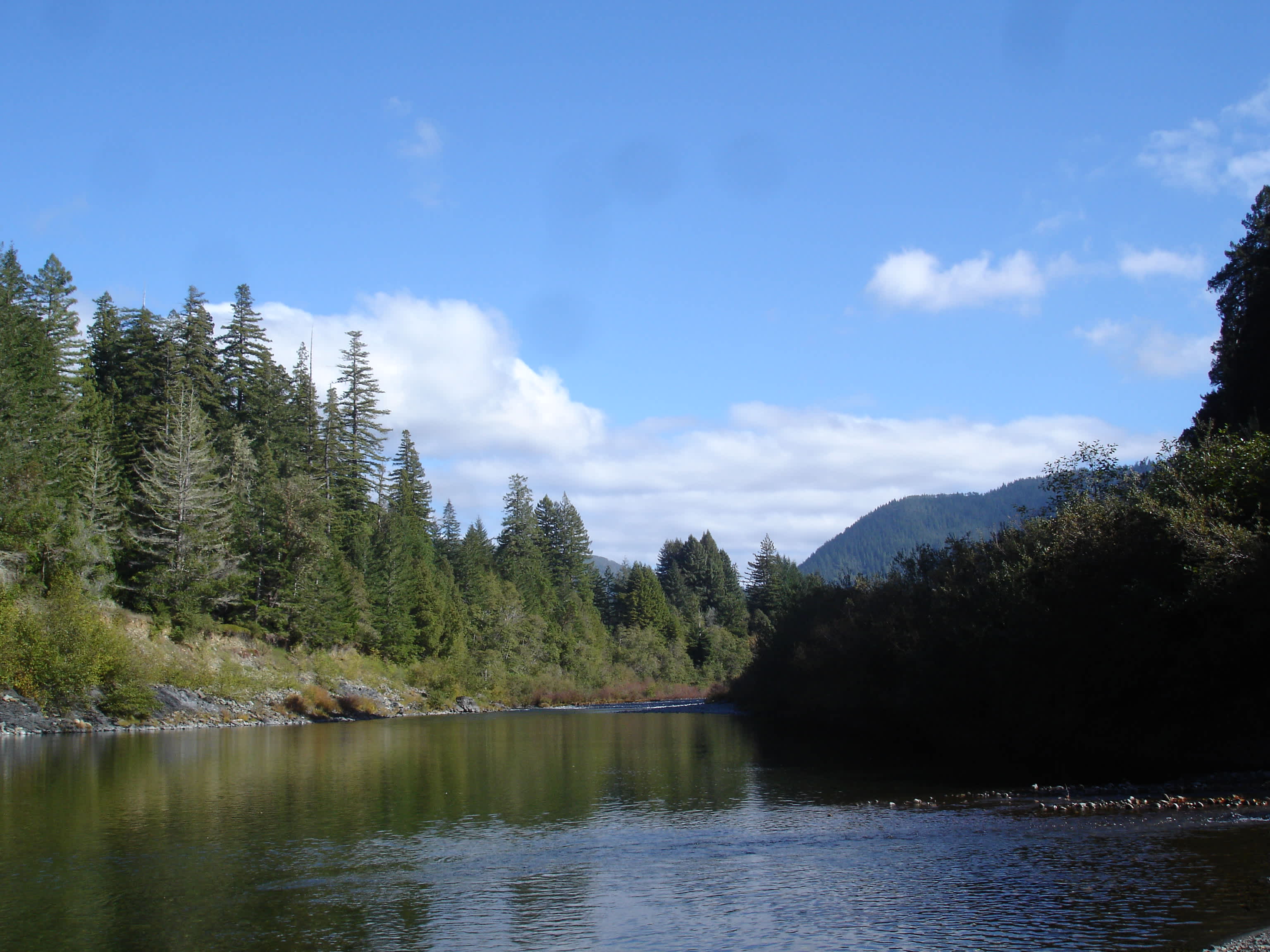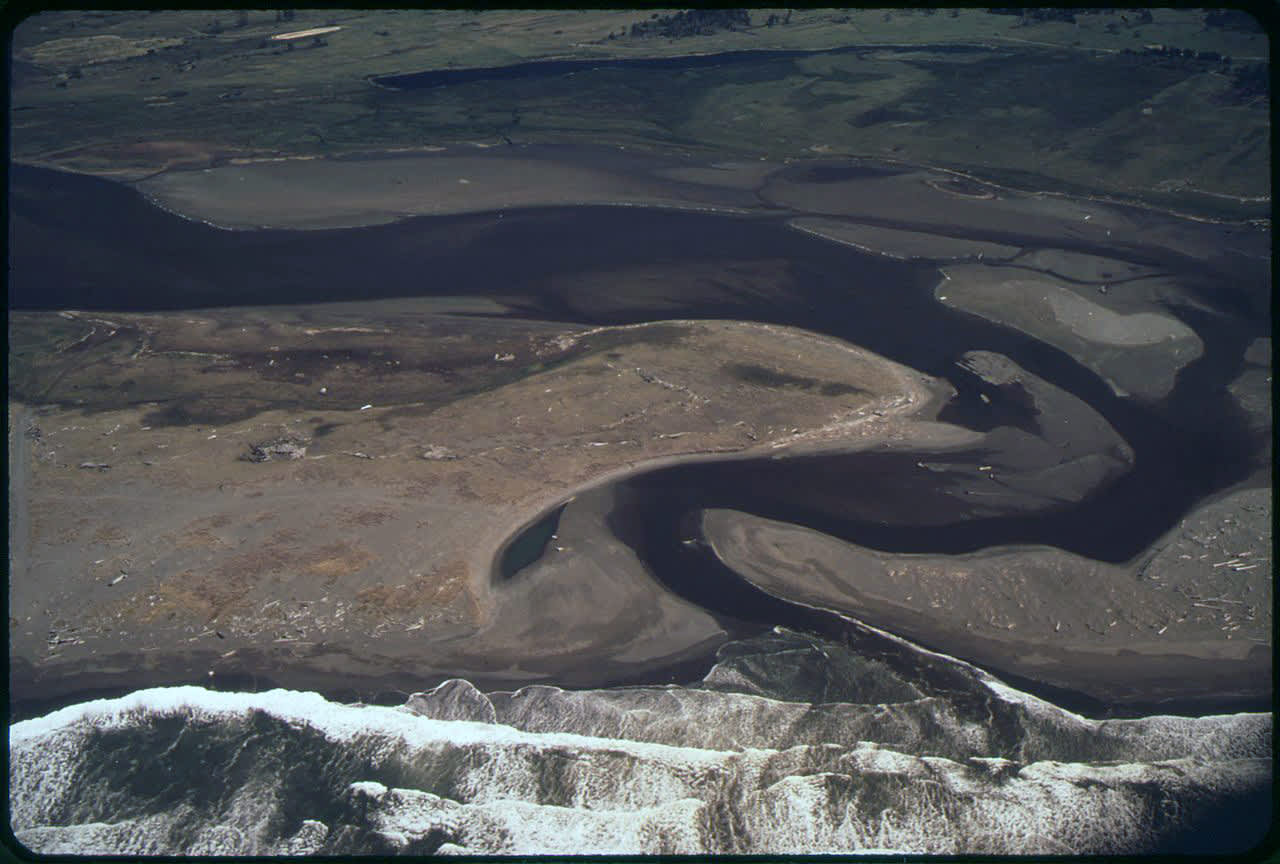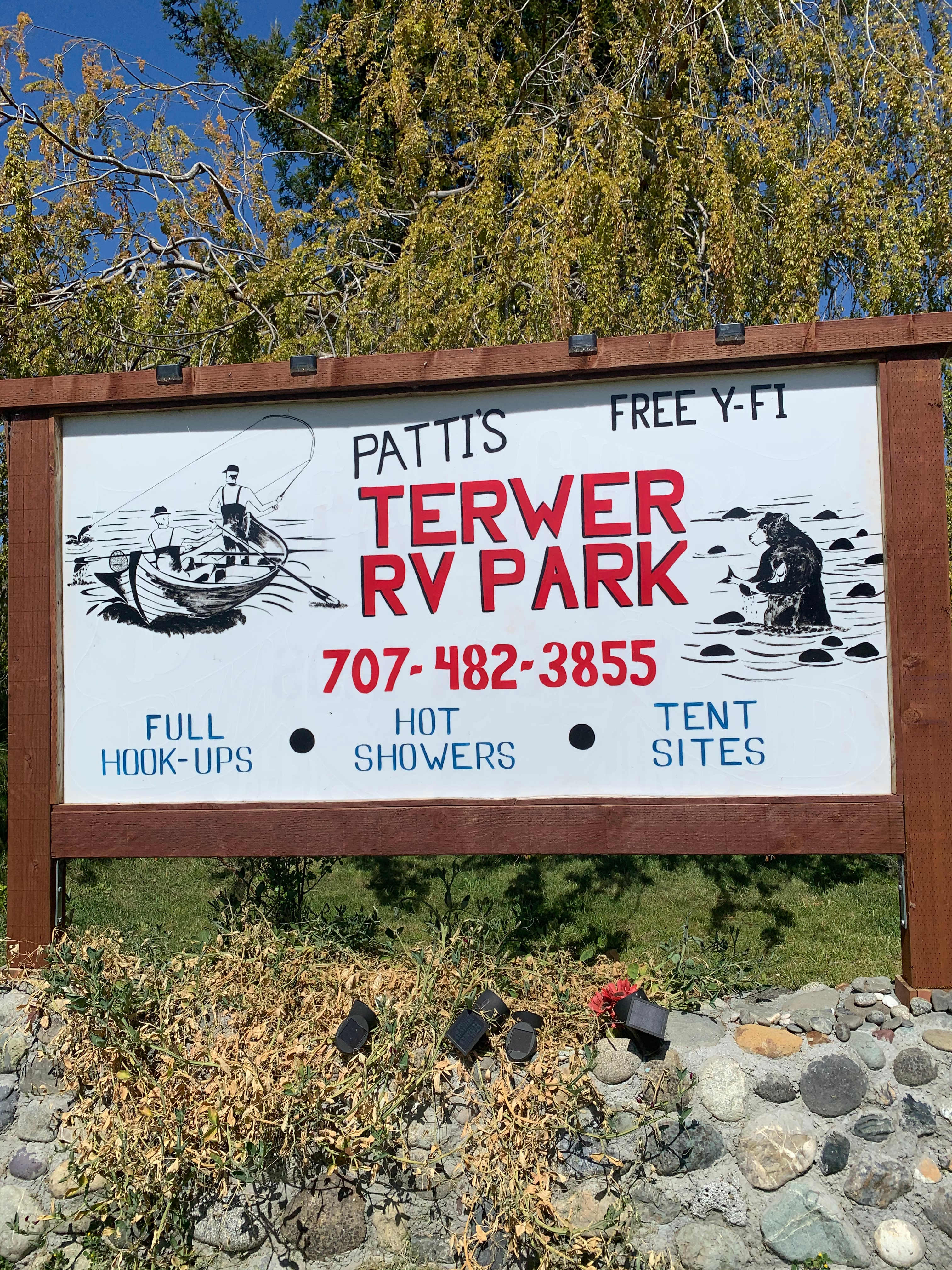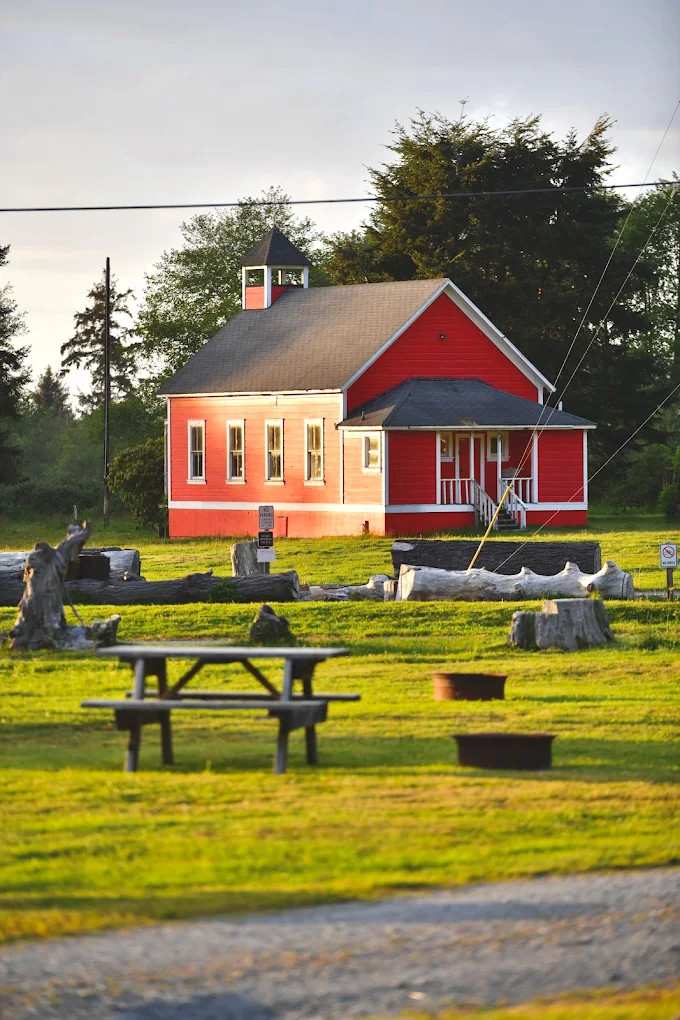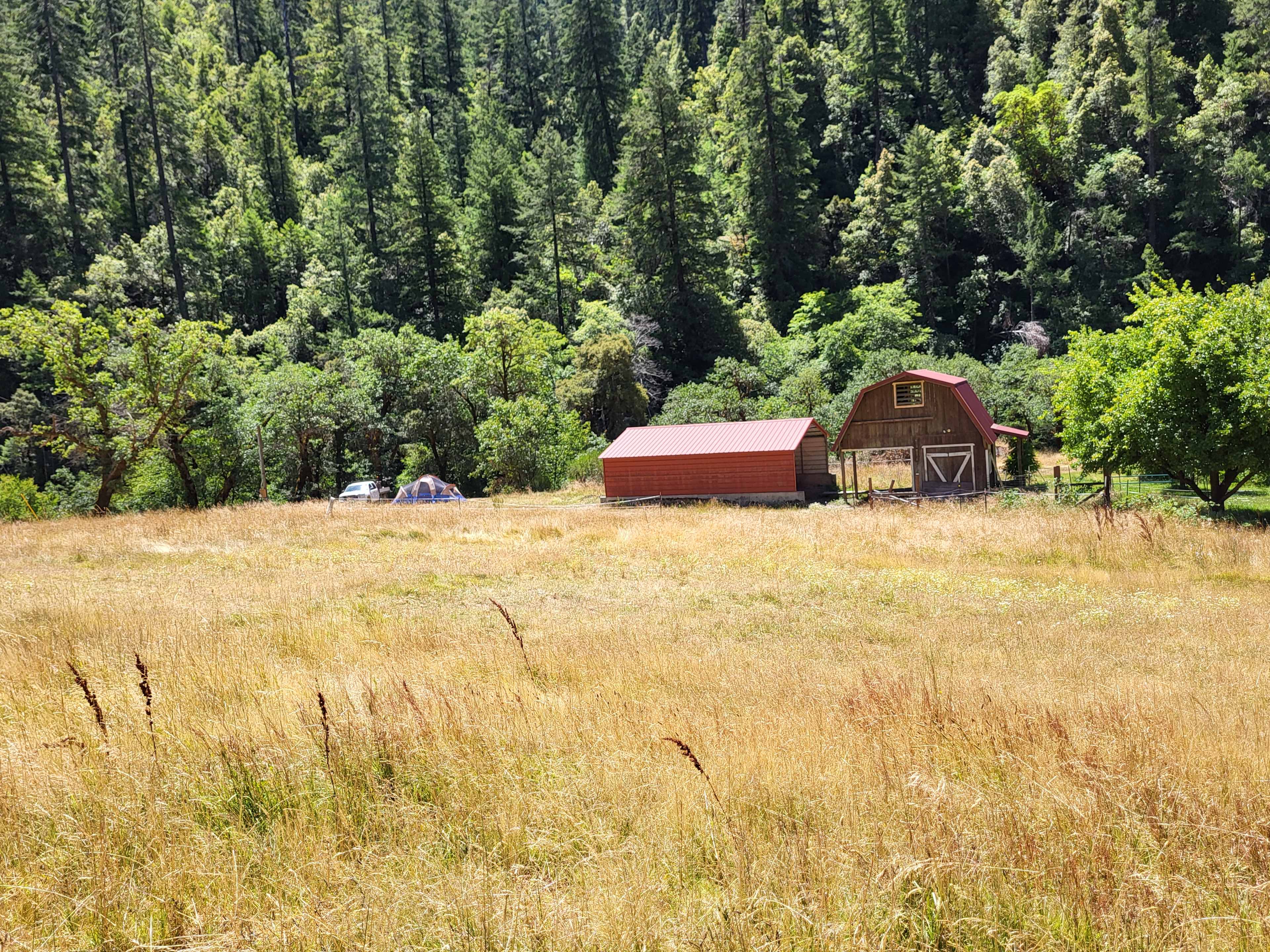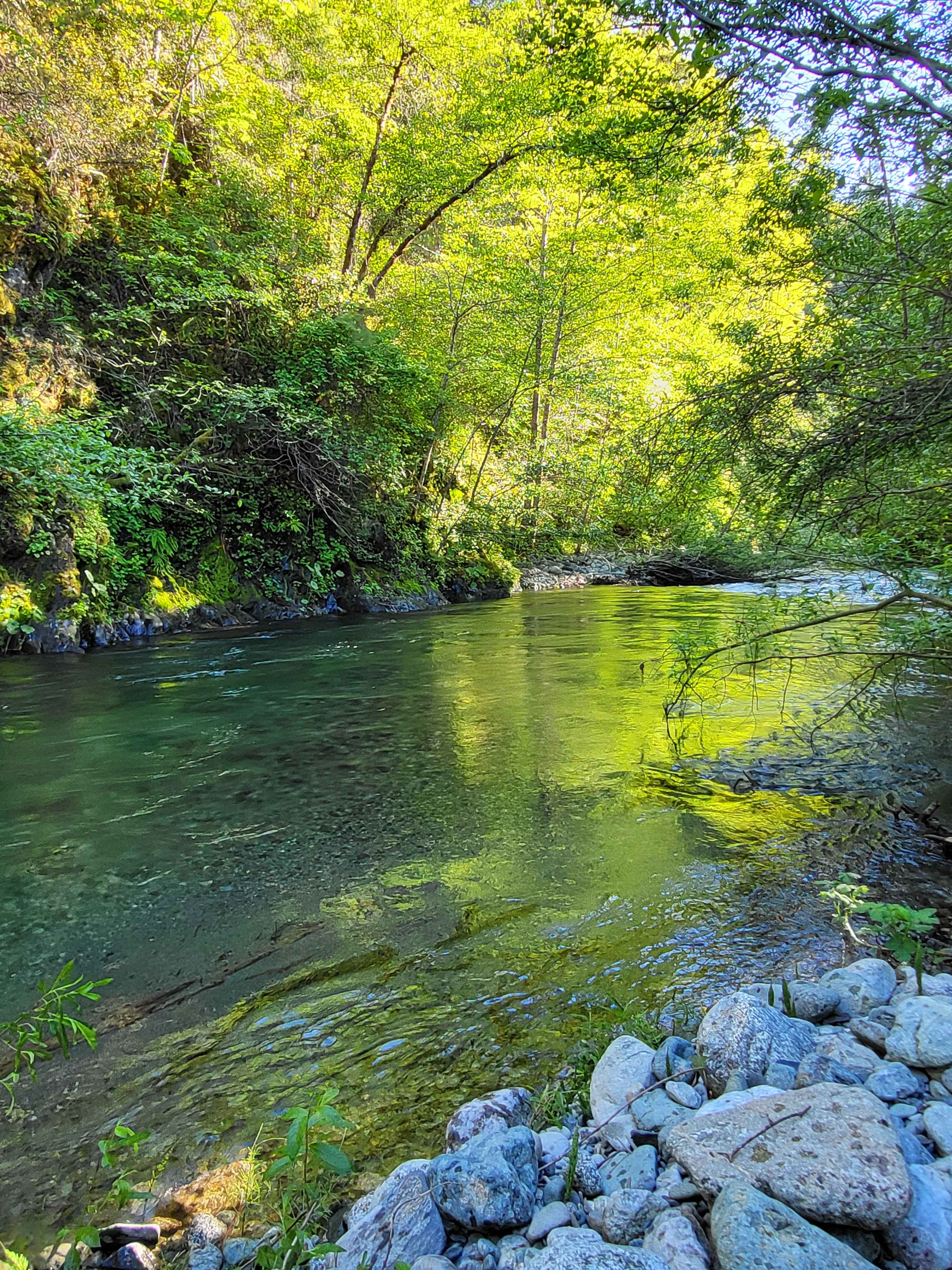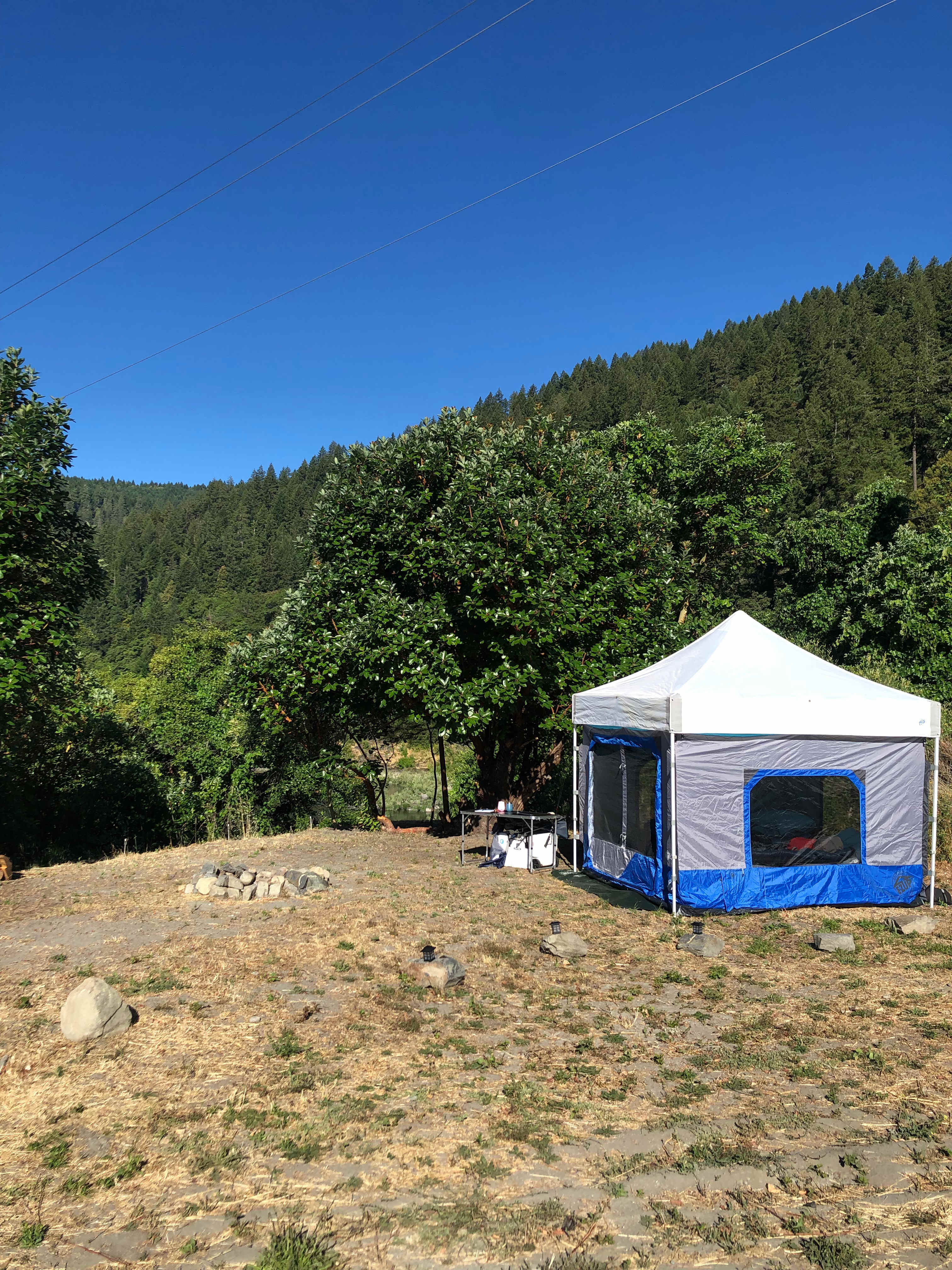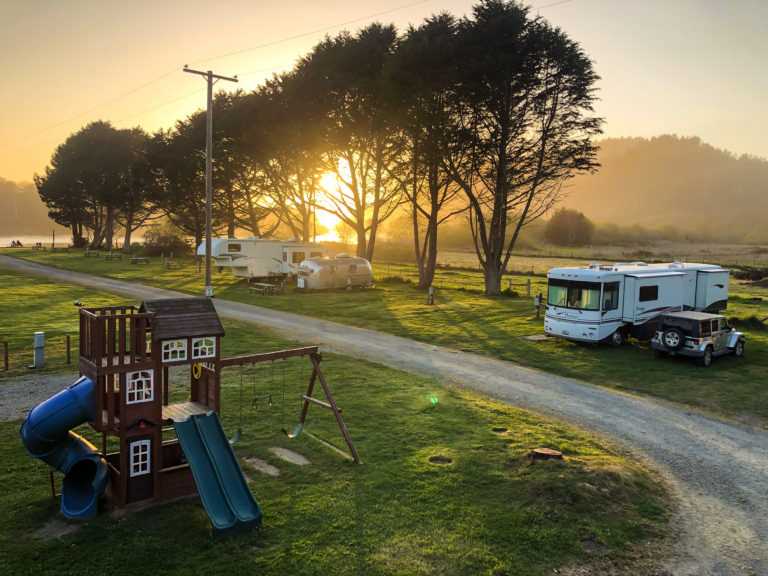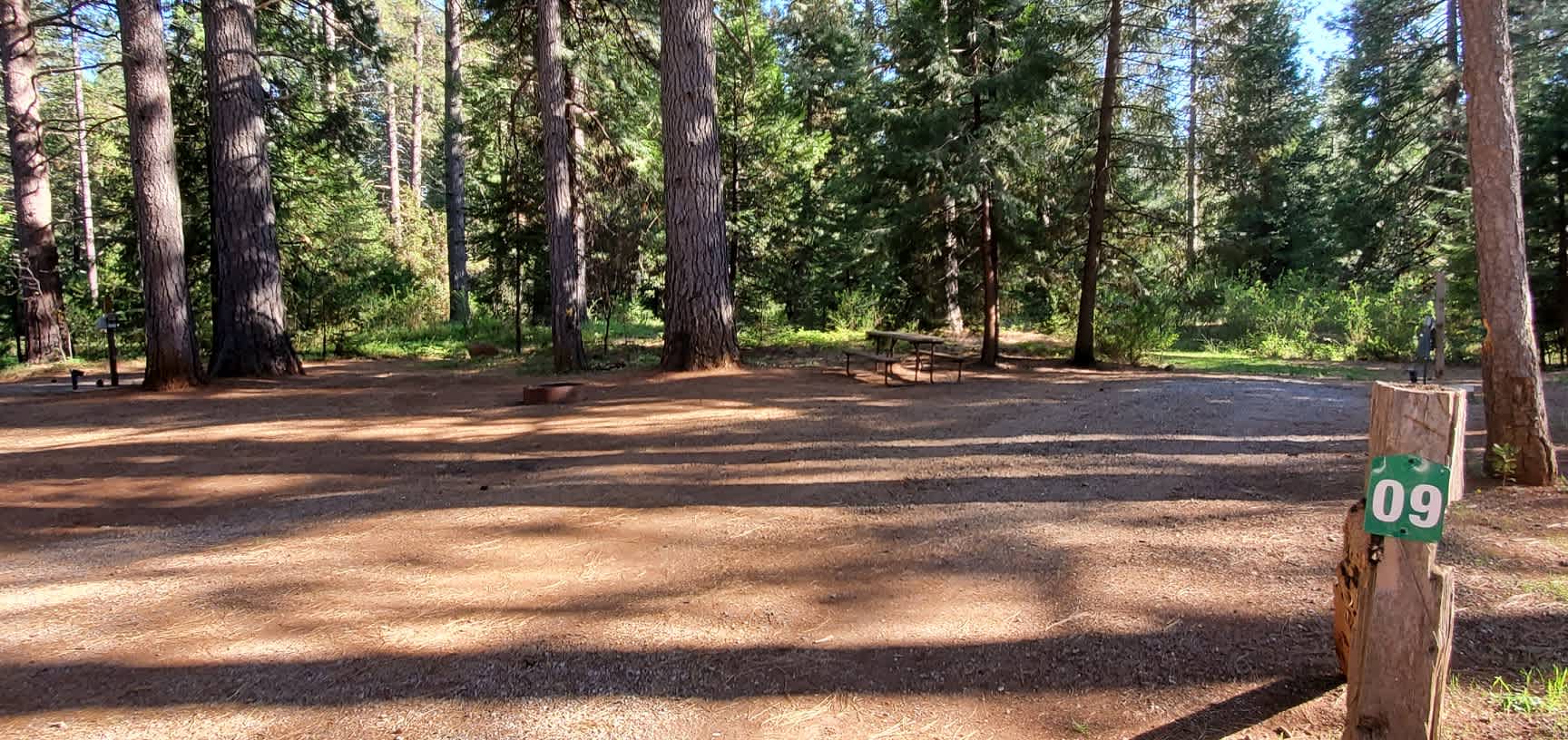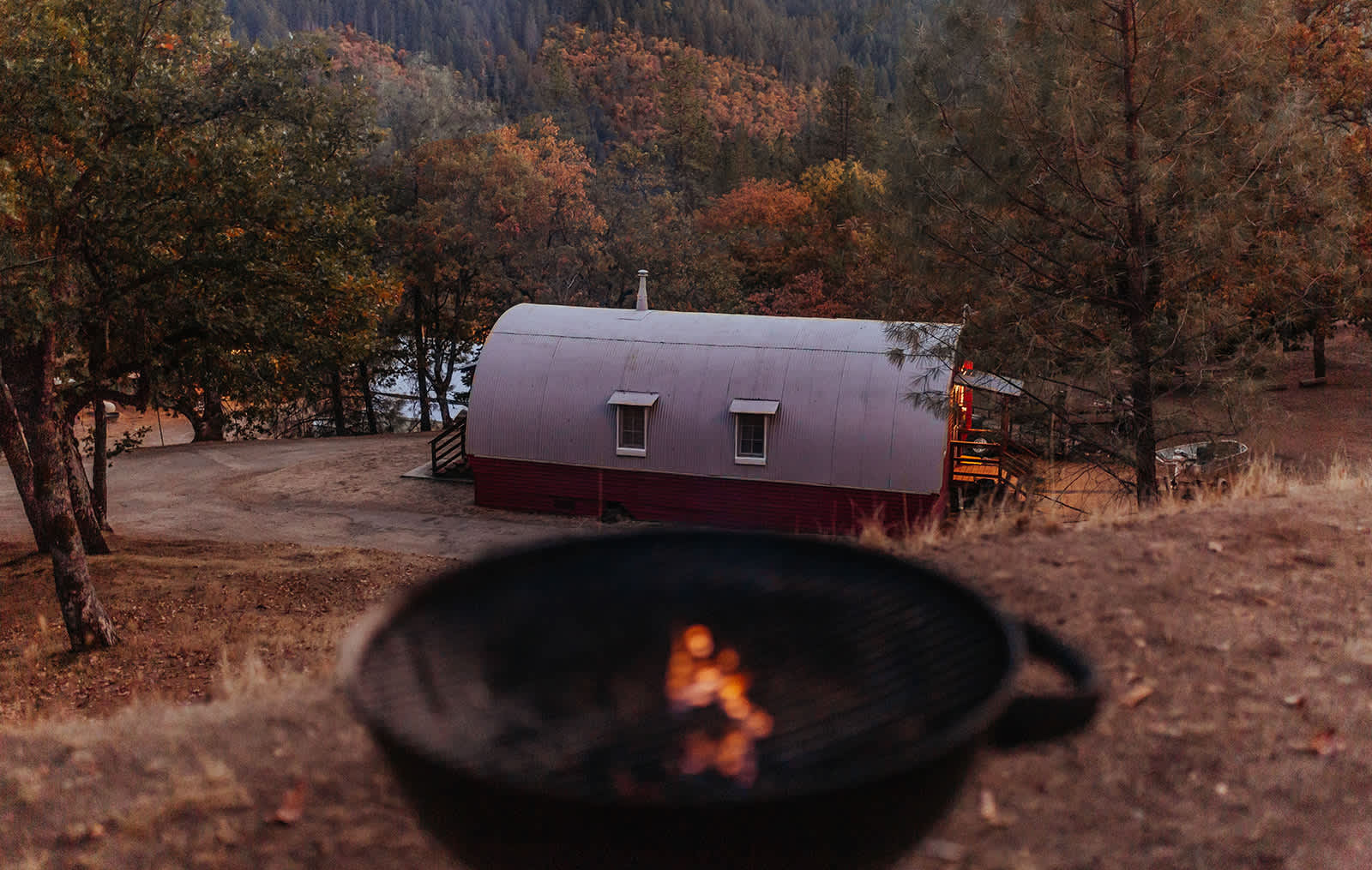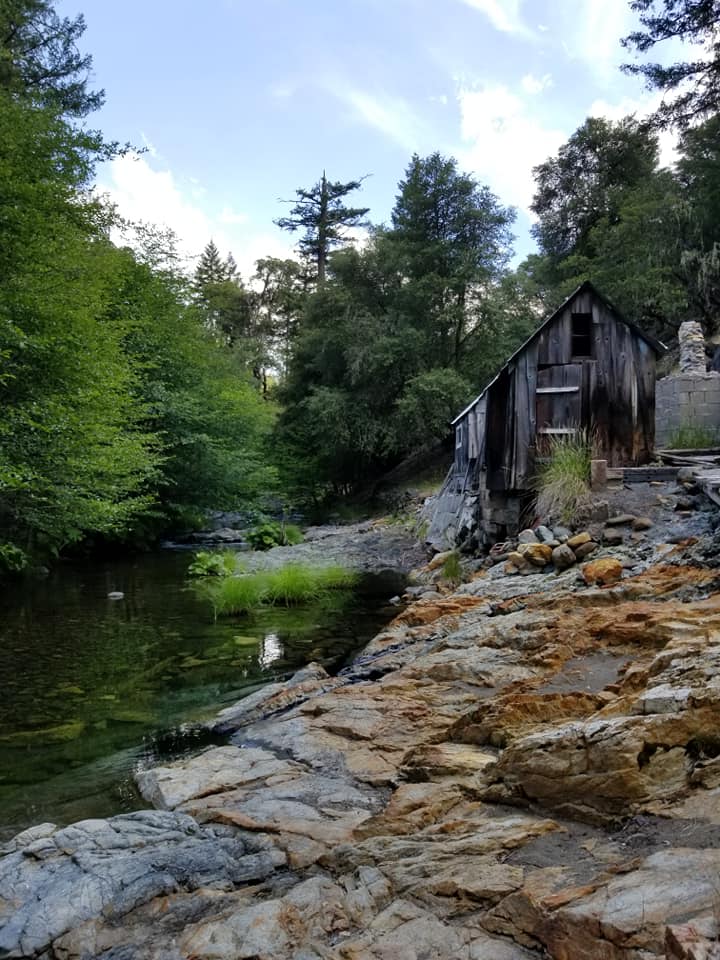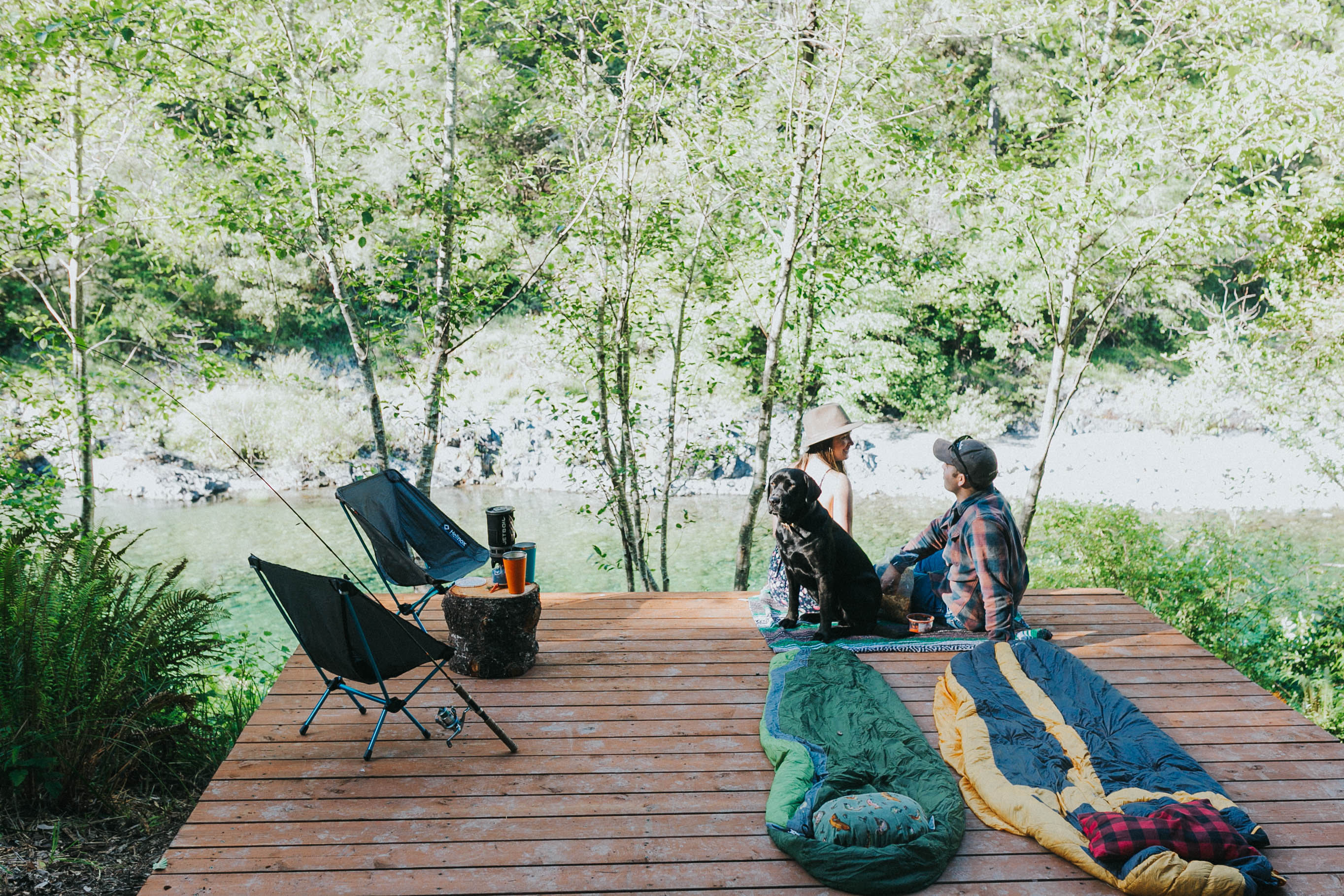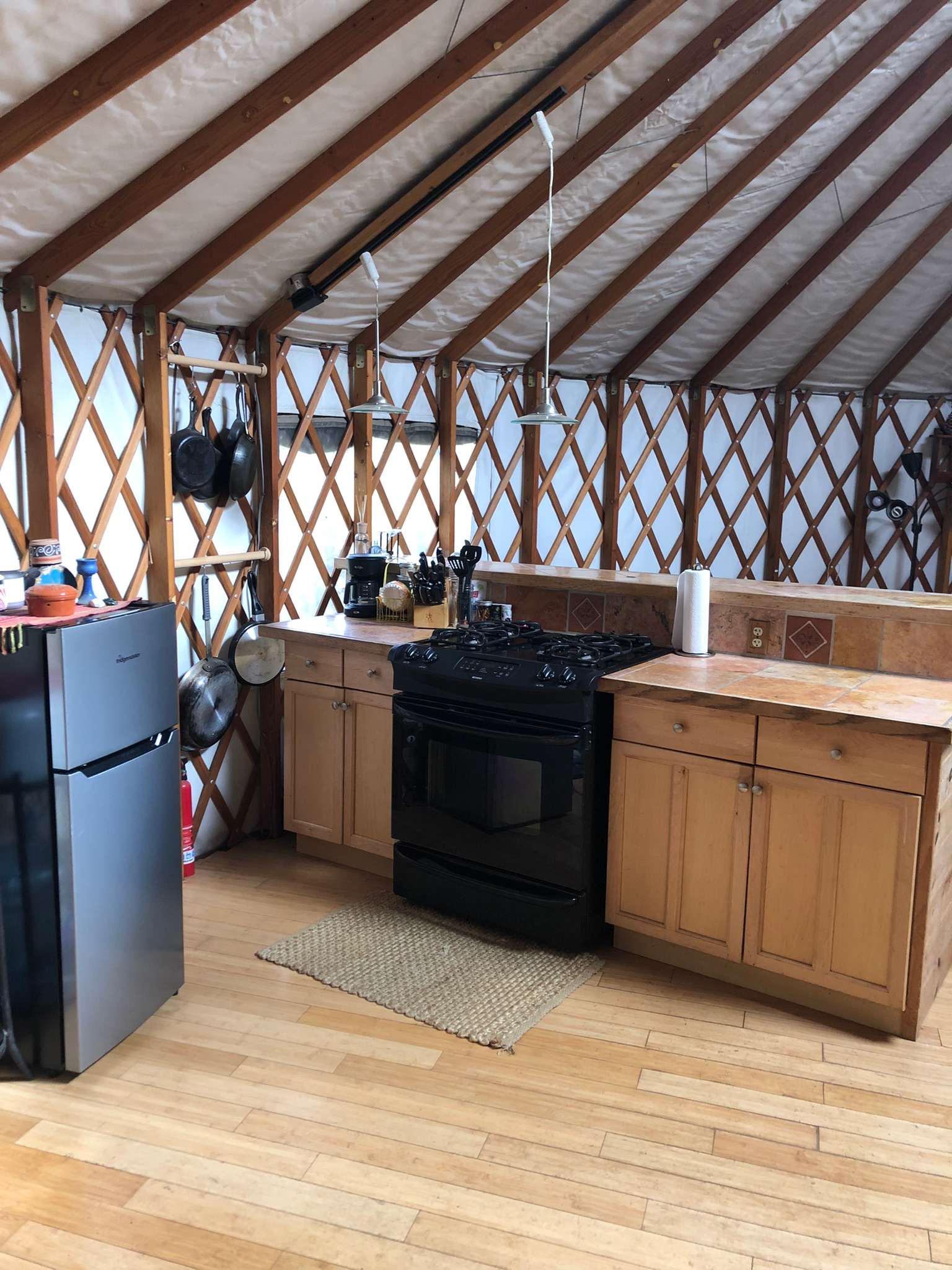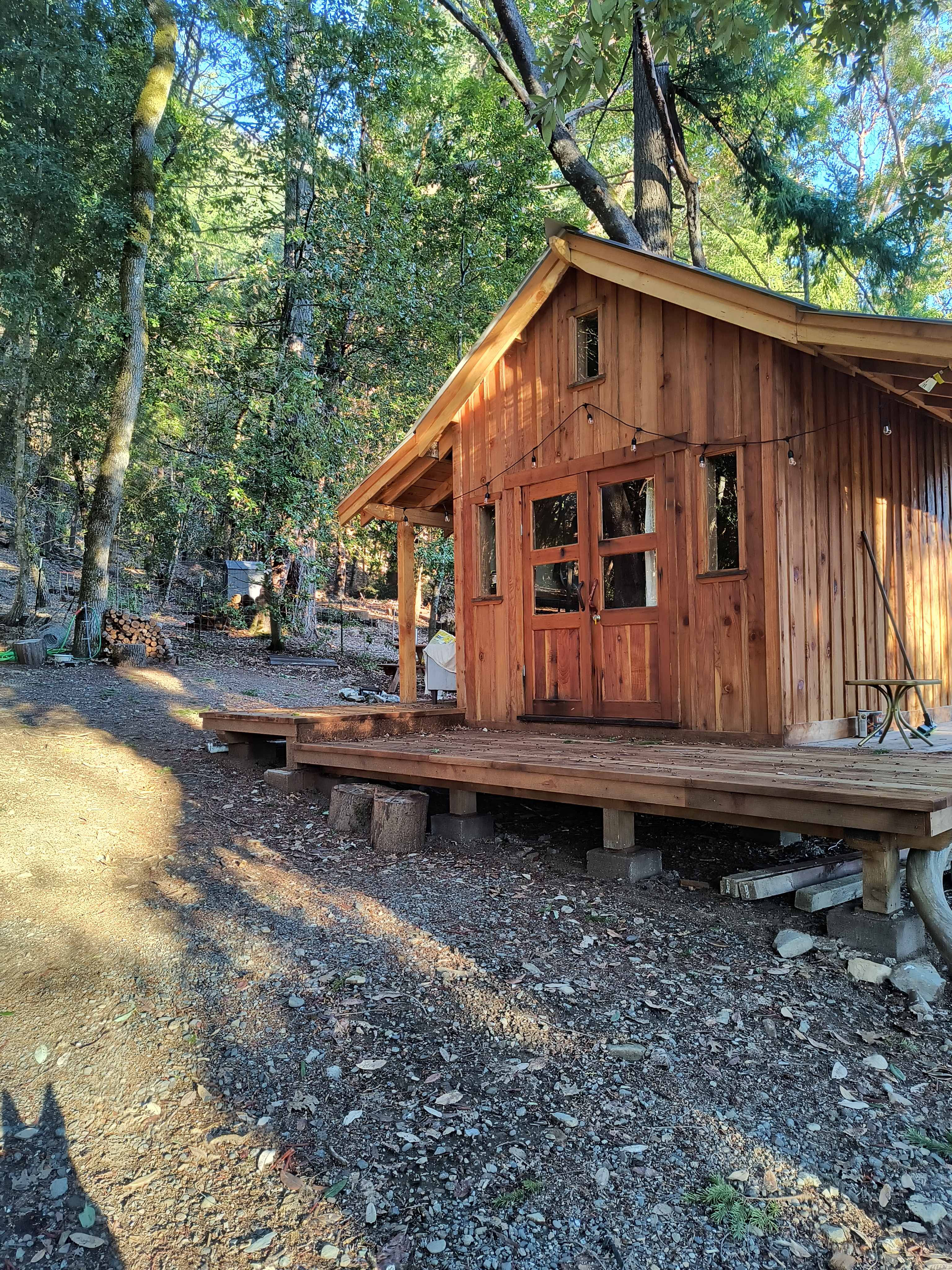Otter Space Riverview Yurt
Otter Space is off the grid, through a Redwood forest and over a mountain down into the Klamath River valley. We have a 5 acre meadow, and an orchard with 50 trees, peaches pears, apples, cherries, plums, pluots, apricots and grapes. We are right on the Klamath river on the Yurok reservation. It's a great place to come and recharge your internal batteries. (We have to start the generator to charge the other kind of batteries, because we're off-the-grid!) There is no telephone or internet service to interrupt your peace and quiet.
The highlight of Otter Space is our spacious Riverview Yurt which perches on a 50 x 50 foot deck overlooking the wild Klamath River. Luscious to sit outside and watch the river flow by during the day, and to let the water lull you to sleep at night. Down the spiral staircase to our Kitchen, stocked with pots, pans, plates, dishes and cutlery for 6-8, as well as a dining area under the deck. The Yurt is a magical get-away that can house two couples, or up to 8 people! The private shower and bathroom is fully equipped and has a picture window overlooking the river. The 30' circular structure was originally set up as a conference meeting room, which morphed into a home for a family of 5 for two years, and is now available for you and your family or friends to stay at Otter Space for a long weekend of "off the grid" relaxation, hiking, and playing in the river. For families, old friends, folks who like to fish, or just for a very special get-away.
We have plenty of places to camp. Our Maple River Camp and Grotto River Camp sites overlook the gorgeous Klamath River. Our Orchard Meadow, Morning Meadow, and Deer Meadow tent sites each have a picnic table and a fire pit and are close to our 5 acre meadow, where black tail deer graze in the evenings. Our Blue Cottage and Pumpkin Cottage each sleep 4-5 comfortably and are close to the shower house and toilets. They have hot and cold running water, a propane cook top, and a wood stove for heat. They do NOT have electric refrigeration, (we use ice chests!). As of right now, we only have electricity if the generator is on. We do not turn it on very often. We have beds with mattresses, blankets, pillows, towels and clean bedding.
Our Double Yellow Shower House has two separate sides, each with a toilet, sink and shower with on demand hot water, so folks don't have to wait. We have a new Camp Shower at the corner of the orchard for our campers, and there is also an outhouse at the bottom of the road to the meadow, for use by Maple River, Grotto River, Orchard Meadow and the Morning Meadow camps, and a second outhouse in the far corner of the meadow for the Romantic Tipi and the Dear Meadow Camp. Feel free to pee outside (with discretion if there are other campers present), for any solid waste, please use the appropriate accommodations. . Please be considerate of others.
We see lots of wildlife, we have silver foxes, a bald eagle, and a family of river otters just downstream. We see vultures and blue heron and osprey who fly overhead when they catch a salmon and call to each other to brag about it! Sometimes we see timid black bears who run from humans but sometimes can be seen grazing in the meadow with the black-tail deer.
We are surrounded by old logging trails made by the lumber companies 80 years ago when they clear cut the old growth redwood on our side of the mountain, and now it's completely reforested with 200 ft tall Doug Fir, Madrone, Cedar, Oak, other Pine species and Pepper wood trees.
MORE ABOUT OTTER SPACE
The Otter Space Conference Center was purchased in 2002 by Dr. Peter Alsop as a place of peace and healing, where human service professionals come to train with Dr. Alsop and learn how to help children and families cope with issues such as chemical dependency, loss and grief, child abuse and trauma. We are located on the Yurok Indian reservation on the Klamath River just outside Orick, CA. The name Otter Space comes from a family of otters that live just down river. It’s also combination of“Artist’s Space” and “Outer Space” and implies the importance of thinking “out of the box”, valuing music and the arts in healing, and living our lives fully, so we can pass our Earth on to our children along with a set of sustainable living skills and personal interactive skills that might help them survive into the future.
Our Main House was built in 1952 and retains the flavor of the 50’s. It houses a kitchen, dining hall, a living room, two bedrooms and a bathroom with a bathtub and shower. The Upper Barn bedroom upstairs with a private bathroom..
Joe and Wendy Moore and their three children live in The Lodge, their log cabin home by the river. They live sustainably off the land and offer workshops on a number of sustainable practices. They will be available to help if help is needed. They also have emergency phone service to the outside world, emphasis on “emergency”.
PARKING
You may want to drive your camper van or smaller RV to the campsite. Depending on the size of your vehicle, you may be able to park in the meadow, next to your camp, or up at the main house, and pitch your tent in the site you’ve reserved.
TIMES
Please clean up and check out of your site by 11:am on the day of your departure. You can check in by 2:pm on the day of your arrival.
CLIMATE & THE KLAMATH
Otter Space is in what many call the “banana belt” of the Humboldt rain forest. Plan on bringing layers of clothing as temperatures can go from hot and warm during the day, to quite cool and even cold after dark. The Klamath River is swift moving (usually about 7 knots, and strong). It runs 286 miles from Klamath Falls, OR to the sea. There are four tributaries: the Scott, Shasta, Trinity and Salmon Rivers. Swimming in the summer months is delicious. We have mostly pebbly beaches and a sandy spot upstream near a big rock outcropping that we use for diving. The river is chilly until late June and it cools down again in late September.
NEIGHBORS
There are very few neighbors in this area. The Yurok village of Wautek is directly across the river from Otter Space. (The non-native name for Wautek is Johnson’s Bar, which used to be a trading post. Ships could get into the mouth of the Klamath and they would send boats upstream to trade with the Yurok for pelts and fish, etc. In the late 1800’s silt build up made it impossible for trading vessels to come into the river, so the trading dried up.) We also have a couple of neighbors who live on the property next to our meadow on the other side of our organic fruit orchard, and my brother Rick lives in a trailer just up stream from the Yurt. Please use our path ways to travel, and respect the privacy and tranquility of our neighbors by not keeping late hours or playing loud music.
COMMUNICATIONS
We are in a remote area and do not have easy access to telecommunications systems. Regular cel phones do not work at Otter Space. This is not an inconvenience; it’s an opportunity to notice how dependent we have become on our electronic connections! We suggest that you make arrangements to be entirely unreachable while you are in Otter Space, and see if the world can get by without your assistance.
If someone needs to reach you in an emergency, they can call 913. 424. 8370. and leave a message. We will check messages at least once a day. This number is a special cel phone and outgoing calls will be made for emergencies only. If you need first aid beyond your own resources, please find Joe or Wendy, as they both have training in alternative medicines and will have some supplies or resources that could help. They can also call for outside help if you need that. In extreme situations, we can call Humboldt CHP at 707. 268. 2000. They will dispatch the first available medevac helicopter, and will know which hospital is available; Mad River Hosp., Arcata// St. Joseph's Hosp., Eureka// or Sutter Coast Hosp., Crescent City. Sutter Hospital can arrange a fixed wing airplane medevac from one of these sites to other facilities for treatment beyond what is offered locally.
FOOD & WATER
Please bring your own food, as the nearest market is an hour away in Orick. All the local people drink the local water, including Joe & Wendy and their kids and our other neighbors. It’s fine for bathing or cooking, but if you are at all nervous about drinking the water here, please pack in your own water for drinking. Please keep food and garbage out of the reach and smell of animals so we don’t have animal visitors at night.
GARBAGE
If you pack it in, please pack it out when you leave.
FIRES
Depending on the time of year, cooking fires are permissible in the fire pits provided. Please NO bonfires. Please self-regulate, as we don’t want to have to be “parental”. Thanks. We have firewood in the forest around the meadow for use for cooking fires, and there is a “burn pile” full of aged fruit tree trimmings that we’ve elected to leave for campers to cut up and use for fires. If you forget your saw, cut firewood is available for purchase.
PETS
Please leave pets at home.
WILDLIFE
On the Klamath River - we might see turkey vultures, golden eagles, bald eagles, merganser ducks, cormorants, King Fishers, Great Blue Heron, night heron, white heron and osprey. Forty years ago there were only 6 osprey nests on the river, due to DDT depleting the calcium in the eggs of the females. Now there are over 325 osprey nest sites on the river. Ospreys are said to be monogamous, and they migrate every year from South America. Each of the little swallows that skin the surface of the river in the morning and early evening eat more than 1000 mosquitoes a day (Yaay!) We occasionally see a harbor seal who comes up river in the summer to avoid the competition at the mouth of the Klamath. We also have seen a family of river otters that live just downstream, and an occasional river beaver. We have never seen a sturgeon at Otter Space. Sturgeon is a fish that has been the same for 20 million years. The biggest sturgeon caught in the Klamath was in 1936, 12,050pounds, 16 feet long, 300-325 years old. They don’t mature until they’re 45-48 ysars old. A female will lay 700,000 eggs in her lifetime. Only 2 will reach maturity. There is a “sturgeon hole” about 7 miles down stream where they live.
Black bears - If you are lucky, you might get to see one of the timid black bears that live in the Lower Klamath area. They are not aggressive unless it is a mother bear protecting her cubs. They run the other way when they see or smell humans. We do not have any brown bears in this area. There is a cinnamon colored black bear that visits us sometimes. Please do not ever feed wild animals.
We also have silver fox, chipmunks, possums, raccoons, one guest saw a very rare lynx and black-tail deer graze in the meadow in the morning and evening. We do not have poisonous snakes in the area, but sometimes there are garter snakes in the orchard.
Mountain lions - are dangerous. We have never seen one, but they do live in this area. Here are the California Department of Fish and Game’s suggestions based on behavior analysis of attacks by mountain lions. * Do not hike alone. * Make plenty of noise to reduce your chances of surprising a lion. * Go in groups, with adults supervising children. * Take a sturdy walking stick: you can use it to ward off a lion. * Keep children close to you. Observations of captured lions reveal that they seem especially drawn to children. * Keep children within your sight at all times.
* Stop! Do not run from a lion. Back away from it slowly, but only if you can do so safely, as running may stimulate a lion's instinct to chase and attack. Face the lion and stand upright. Make eye contact. If you have small children with you, pick them up so they won't panic and run. Although it may seem awkward, pick them up without bending over or turning away from the lion.
* Do not bend or crouch over. * Do all you can to appear larger. A person squatting or bending over looks a lot like a four-legged prey animal. * Raise your arms. * Open your jacket, if you're wearing one. * Throw stones, branches, or whatever you can grab without crouching down or turning your back. * Wave your arms slowly and speak firmly in a large voice. * Never approach a lion, especially one that is feeding or with kittens. Most mountain lions will try to avoid confrontation. * Give them a way to escape. * Fight back if attacked. * Try to stay on your feet if a lion attacks you. * Lions have been driven off by prey that fights back. Some hikers have fought back successfully with sticks, caps, jackets, garden tools,and their bare hands.
HIKING
We are surrounded by old logging trails made by the lumber companies 80 years ago when they clear cut the old growth redwood on our side of the mountain, and now it's completely reforested with 200 ft. tall Doug Fir, Madrone, Cedar, Oak, other pine species and Pepper wood trees. The property surrounding us is mostly owned by Green Diamond Company that cuts trees for lumber and then re-forests with saplings. There are also other properties that are not clearly marked or fenced in. Mostly everyone we have met here are friendly, and we have never had any problems exploring the trails and creeks in this area, but please use discretion and politeness while hiking. If you see marijuana growing, please DO NOT HELP YOURSELF. It’s not wild, and growers do not take kindly to people helping themselves. Even if you get away with it, they may want to “teach us a lesson” at Otter Space. Please respect these wishes.
TheYurok PeopleThe Yurok live on the Pacific coast of northwestern California. Many of their villages were either on lagoons or at the mouths of streams; others were along the lower course of the Klamath River. The Yurok placed great emphasis on accumulating wealth and asserting status. The wealthiest members of Yurok society owned multiple sets of dance regalia and served as hosts for ceremonial gatherings. They wore distinctive clothing, such as highly decorative basketry caps, as a means of displaying their wealth. Even their style of speech was more elaborate than the contracted version spoken by commoners.
The natural resources of northwestern California were abundant, permitting the Yurok to live in permanent, year round villages. They harvested salmon,sturgeon, eel, surf fish, shellfish, sea lions, deer, elk, and acorns. Dense redwood forests provided the Yurok with wood for their distinctive split-plank houses, constructed with either single-pitched or double-pitched roofs. Redwood also was used for the manufacture of a variety of household items, such as wooden stools, storage boxes and cooking implements. Using stone adzes and wedges, Yurok craftsmen carved blunt-ended dugout canoes from large redwood logs.
